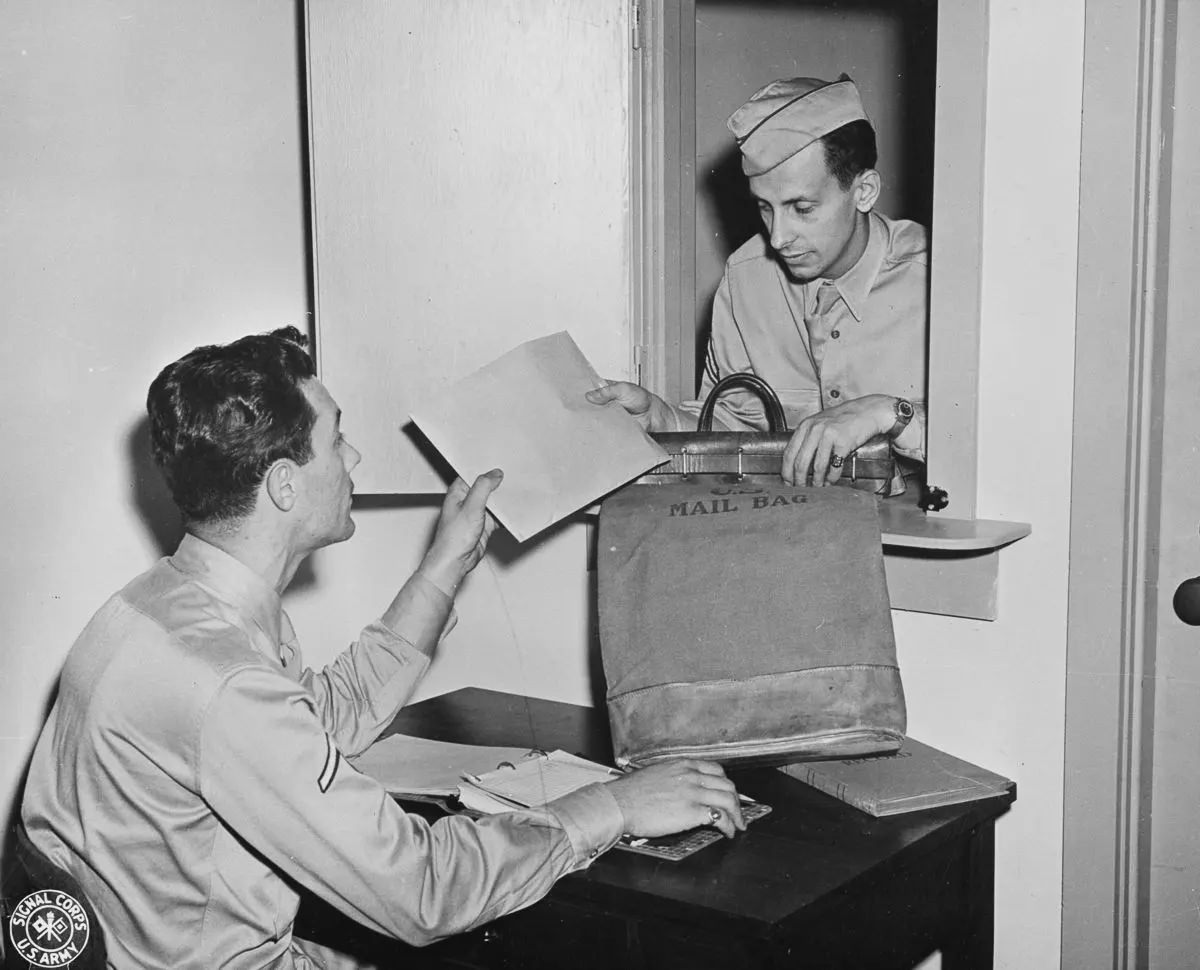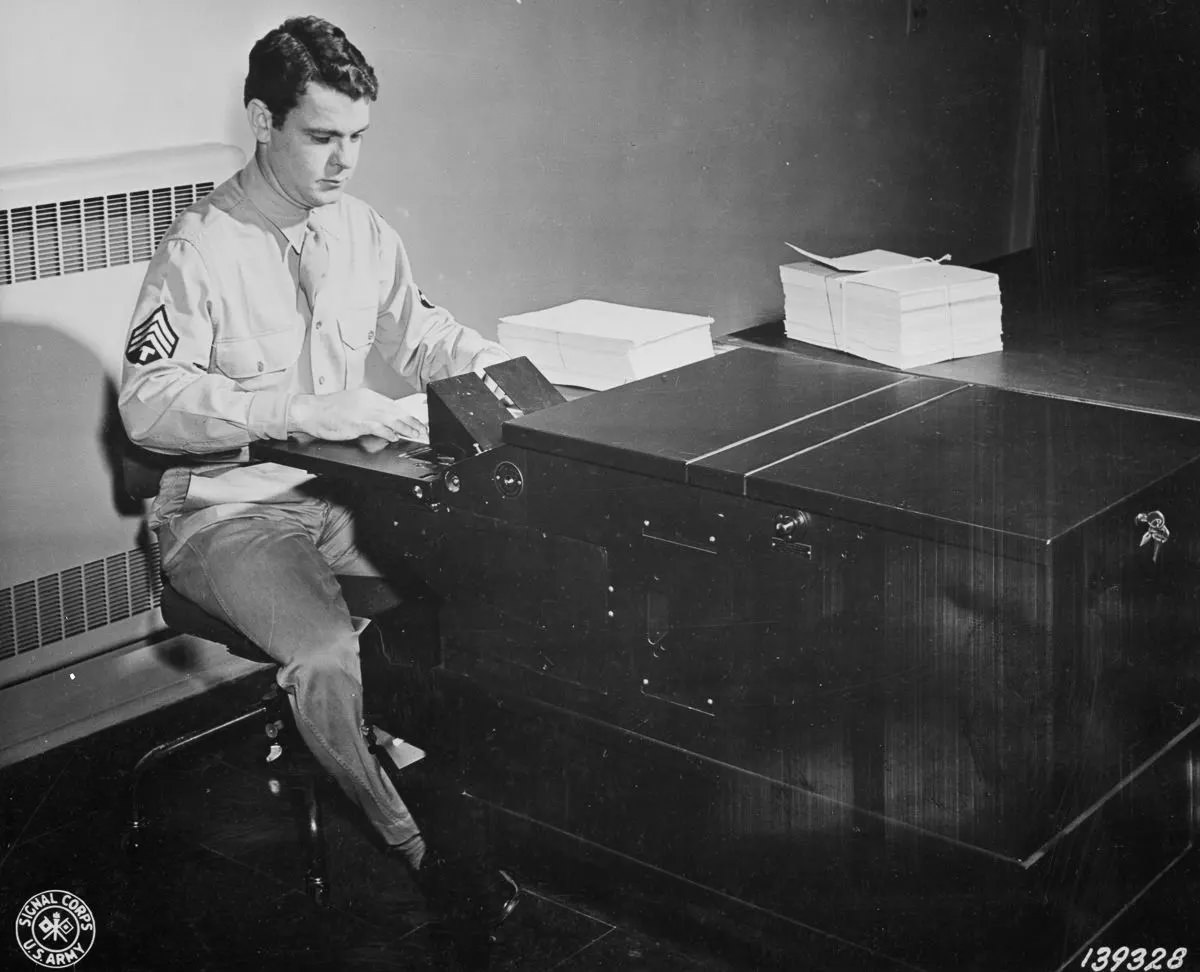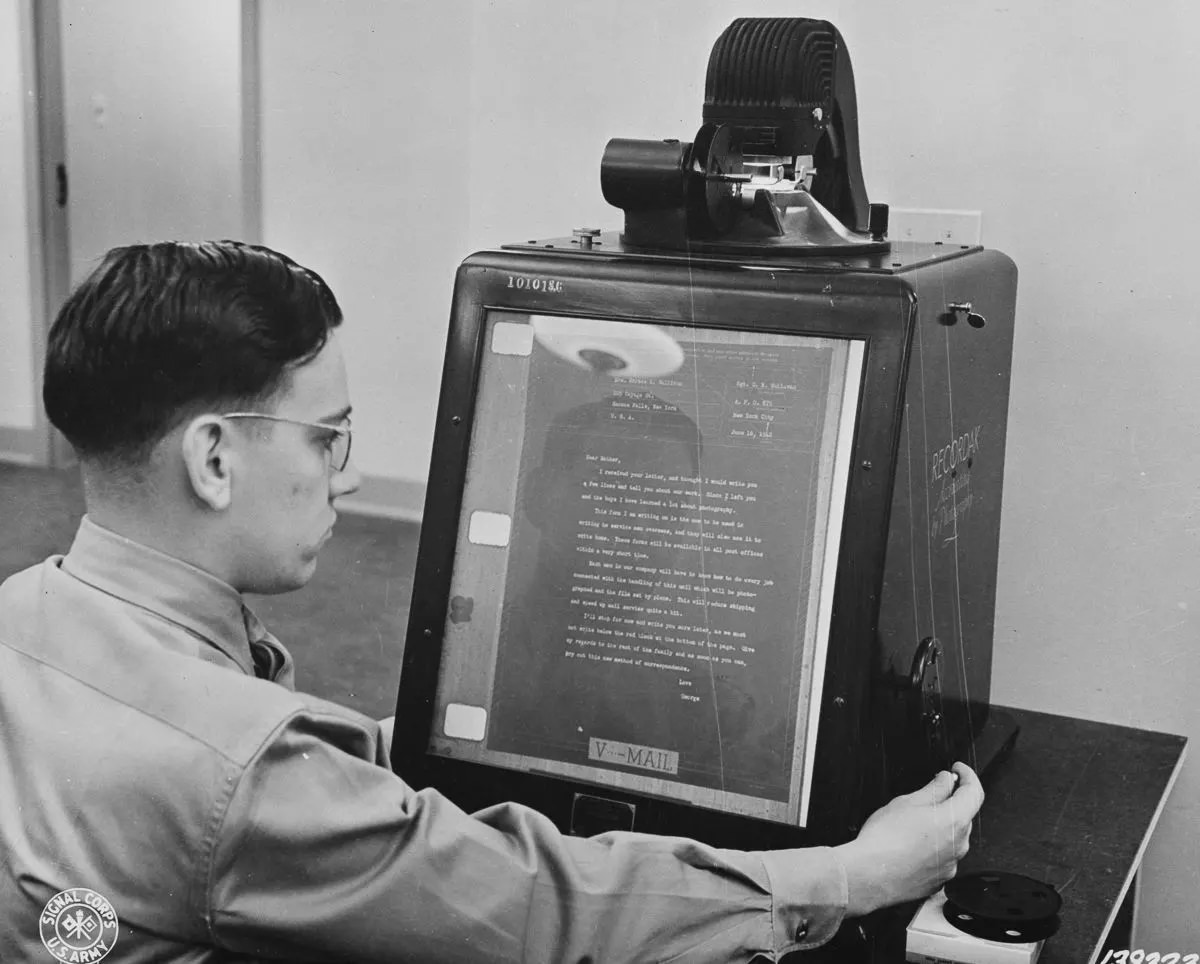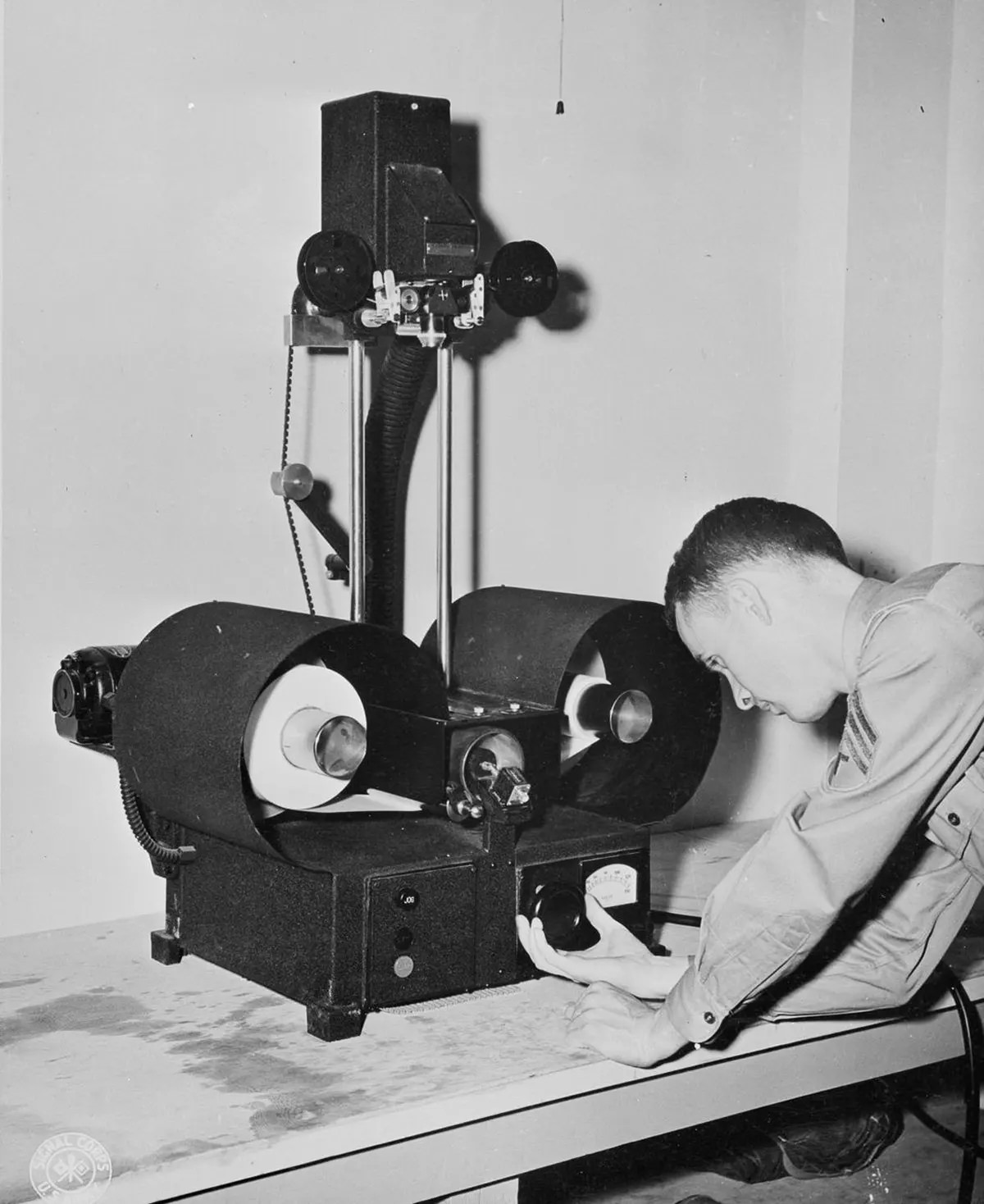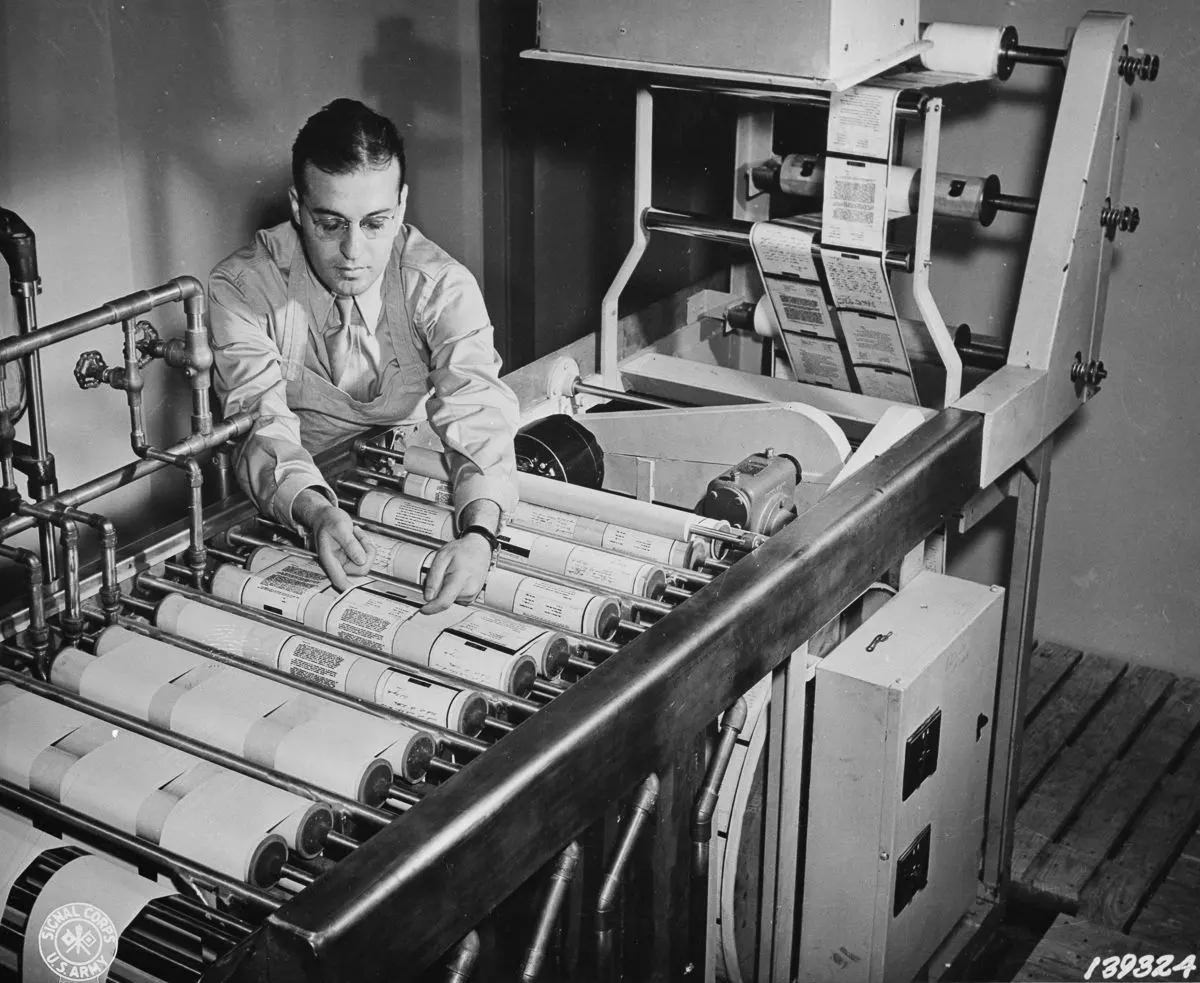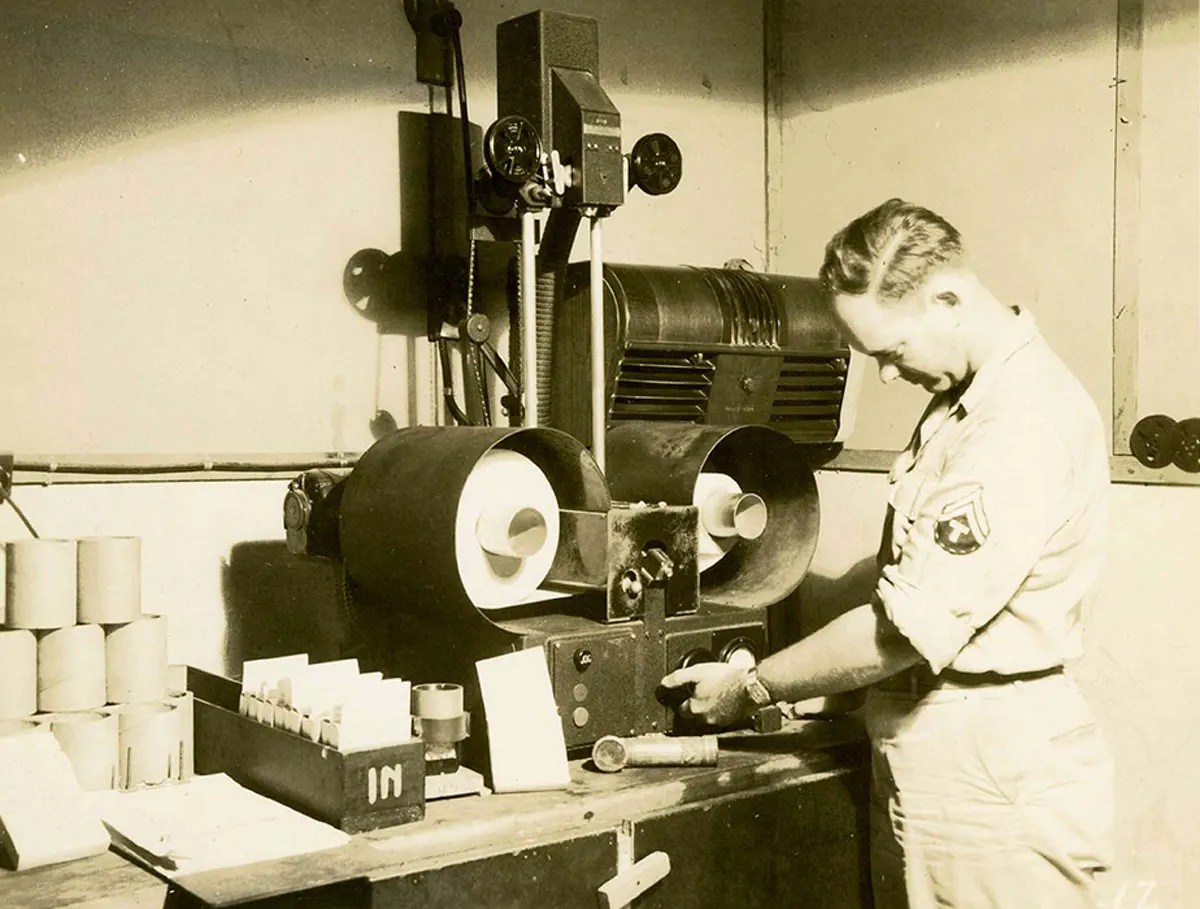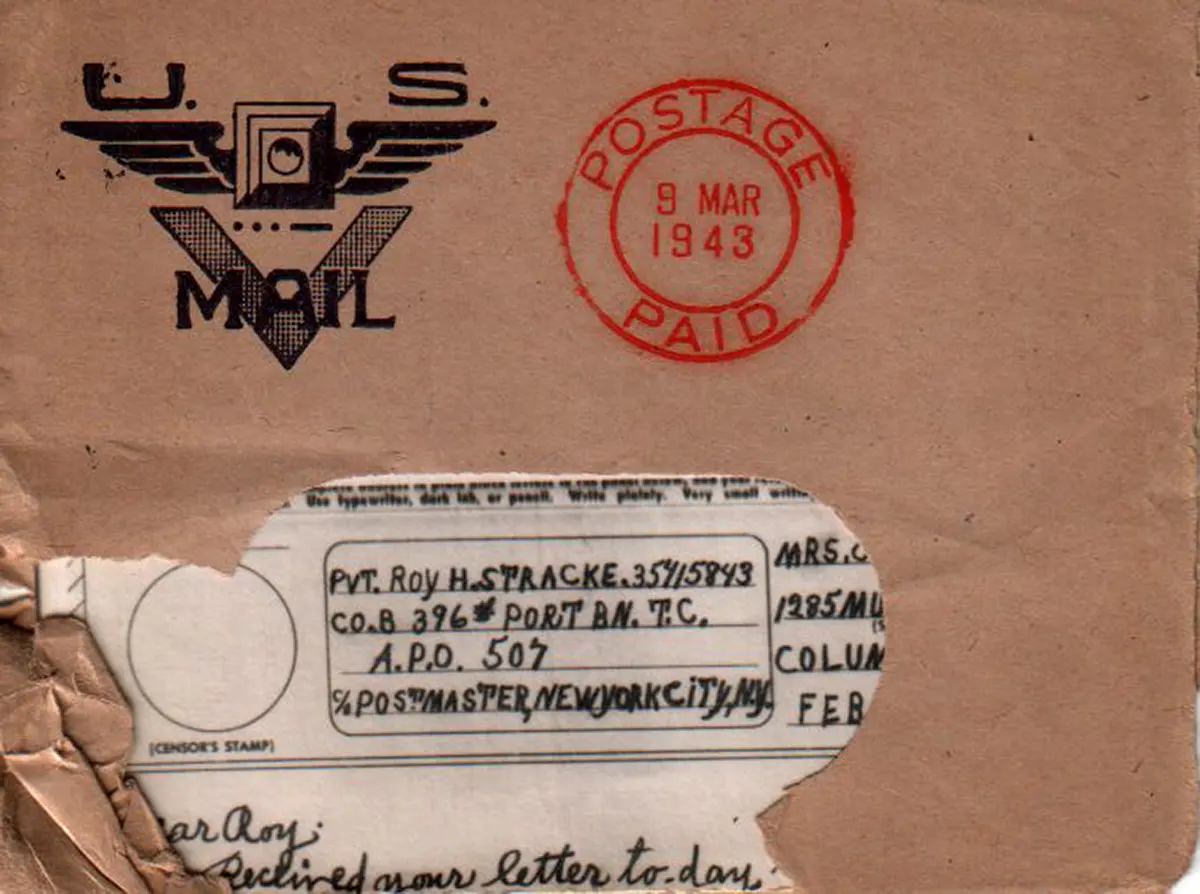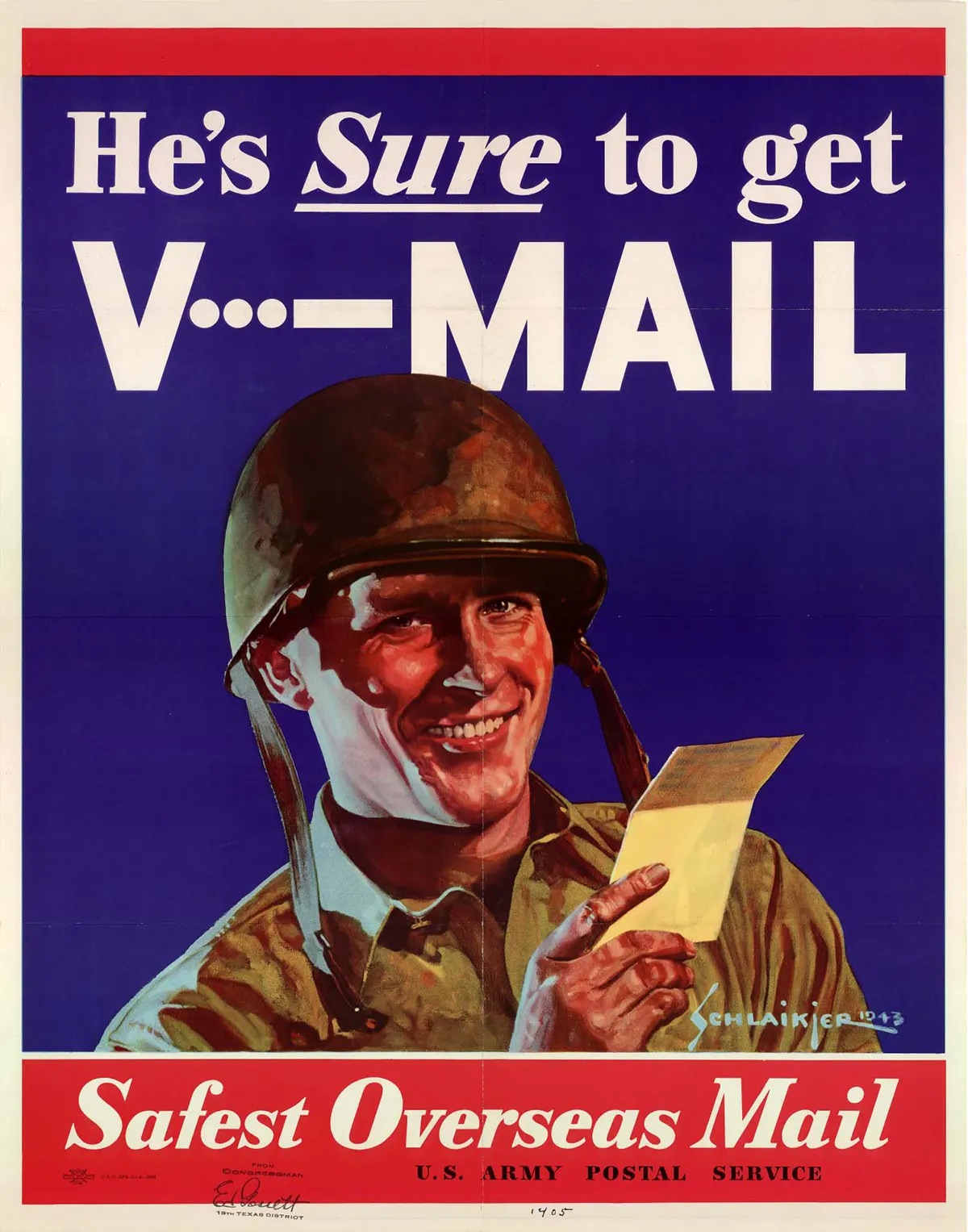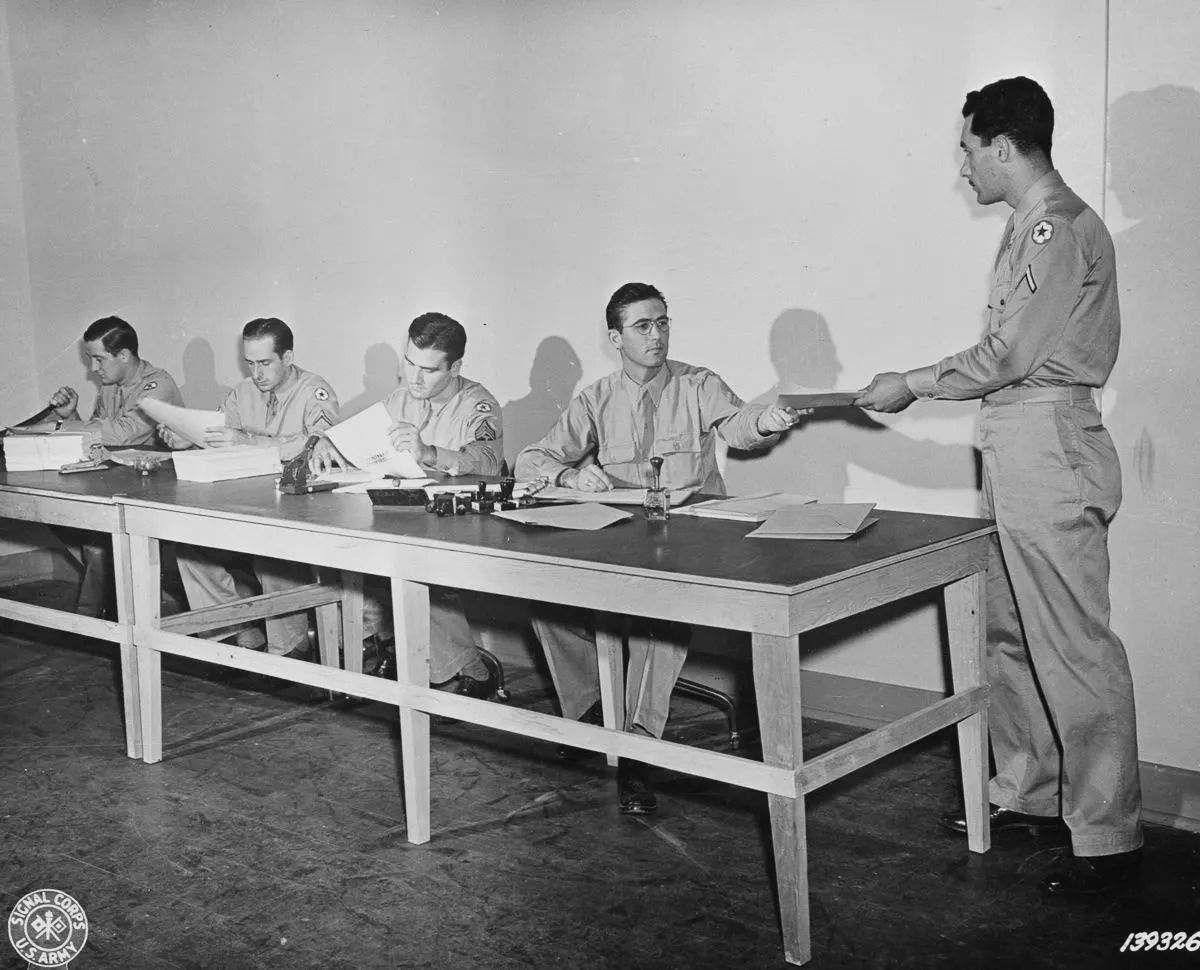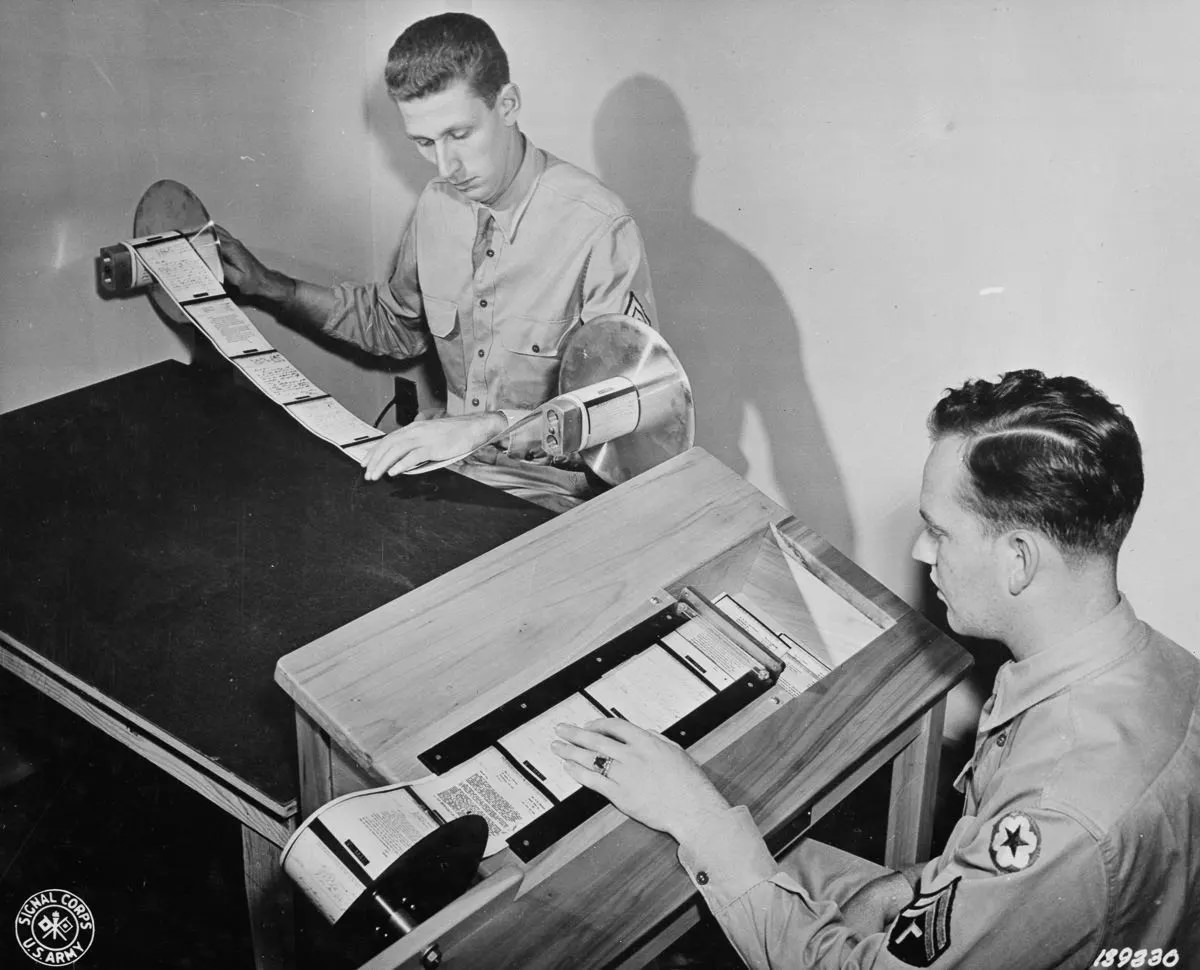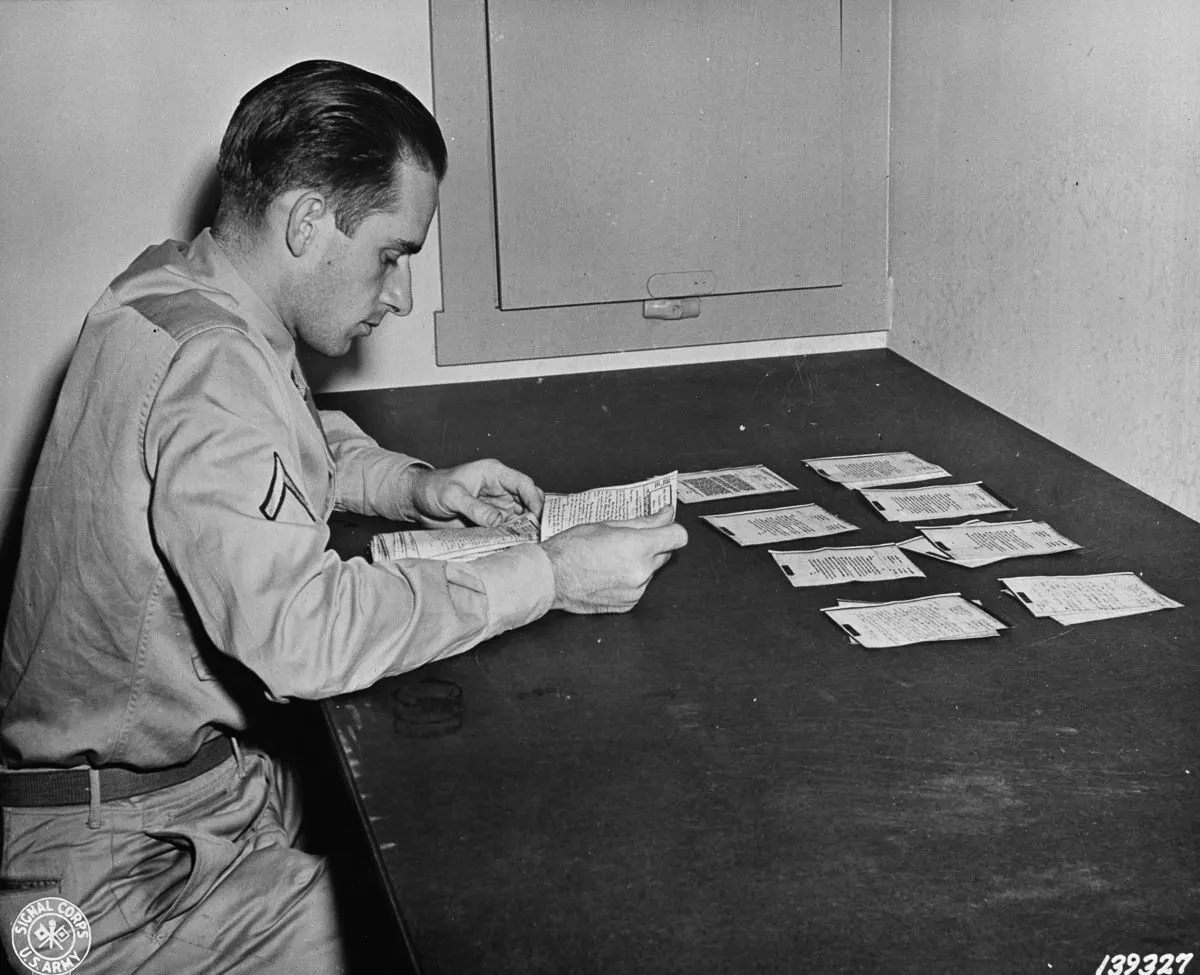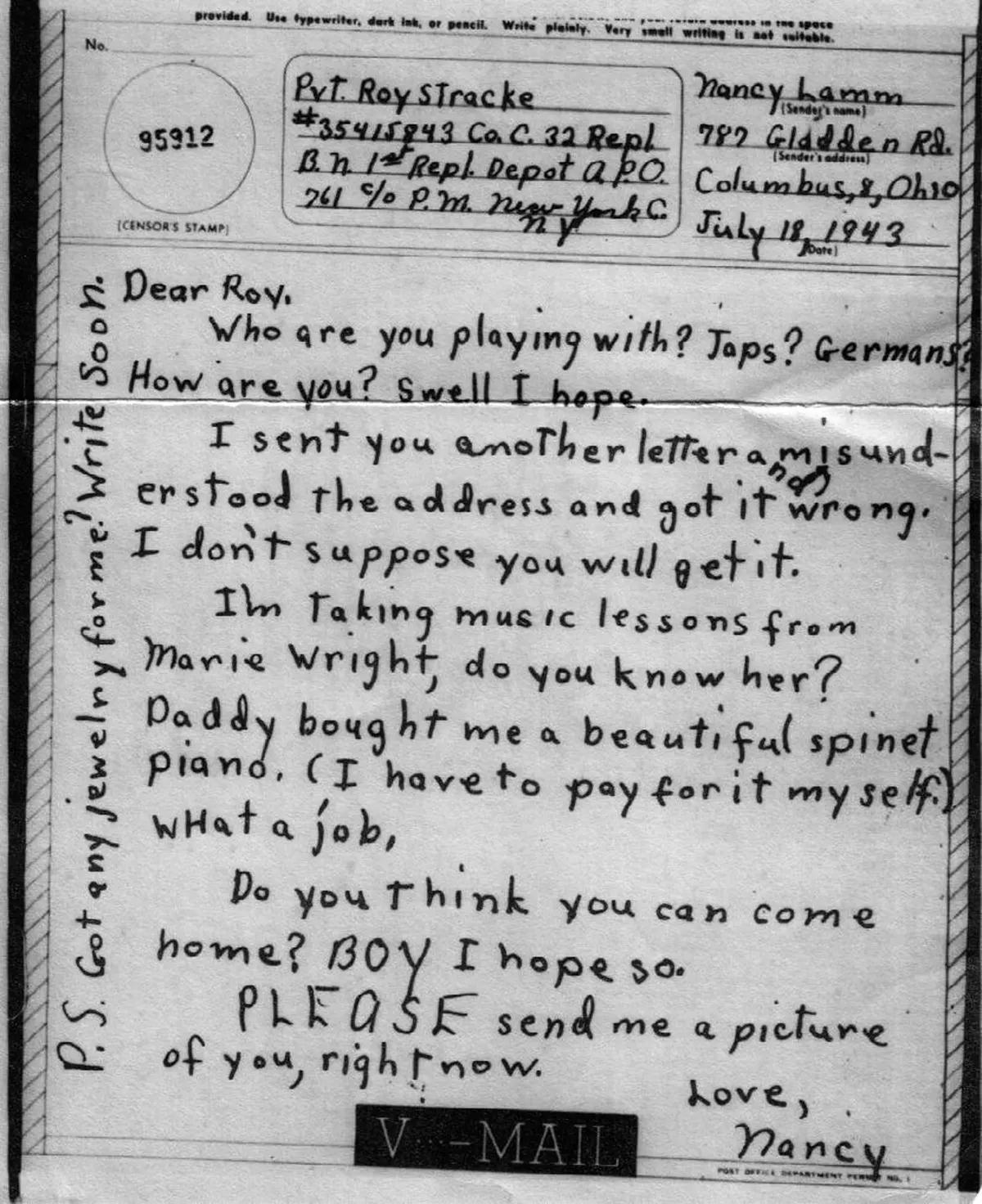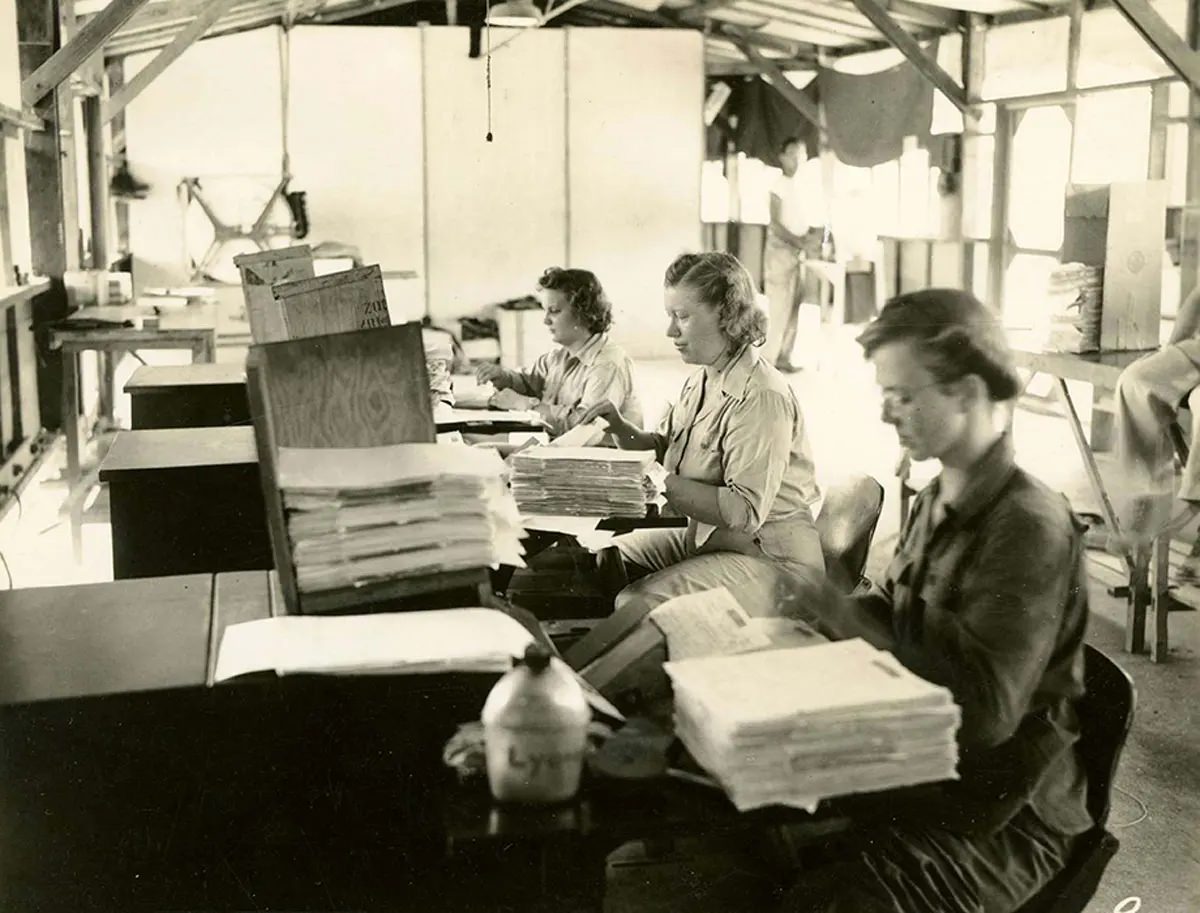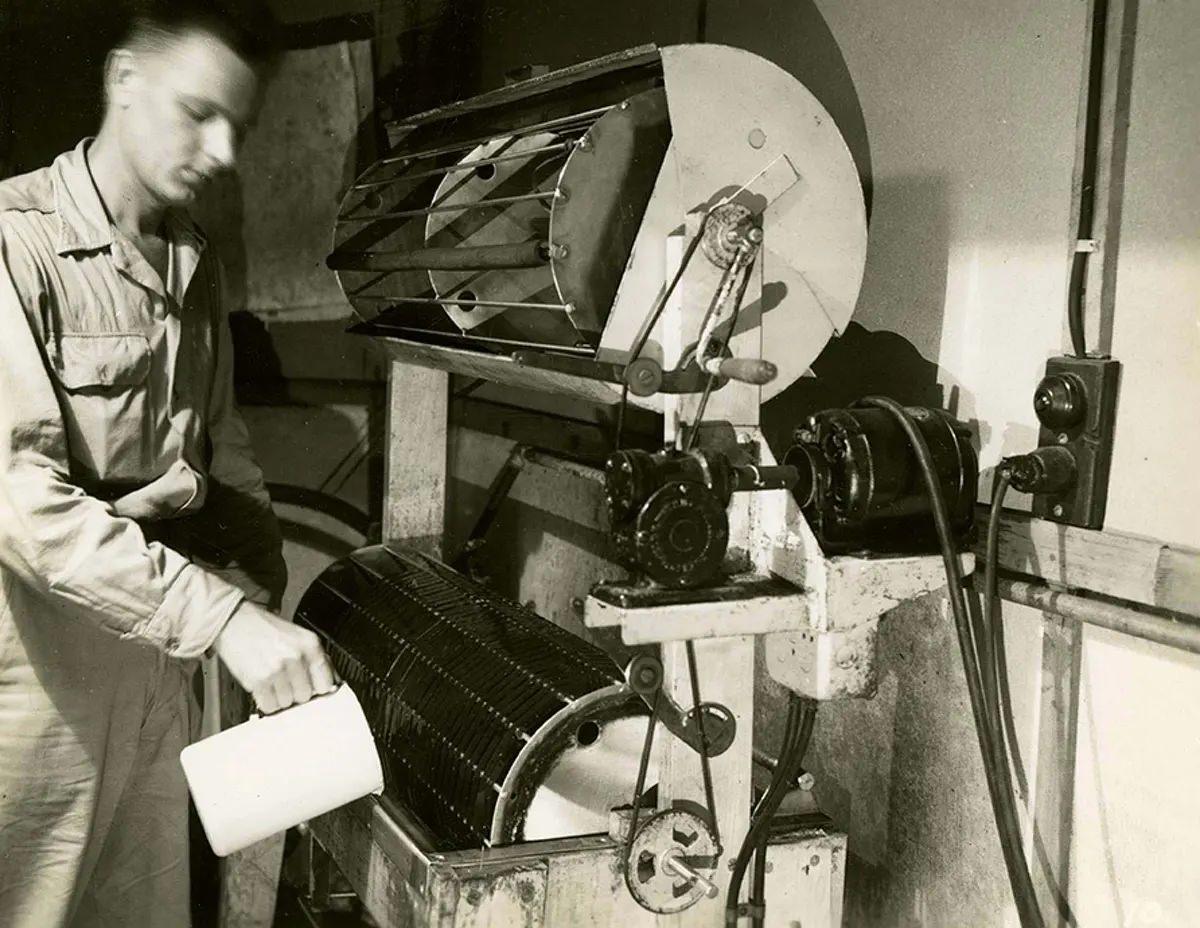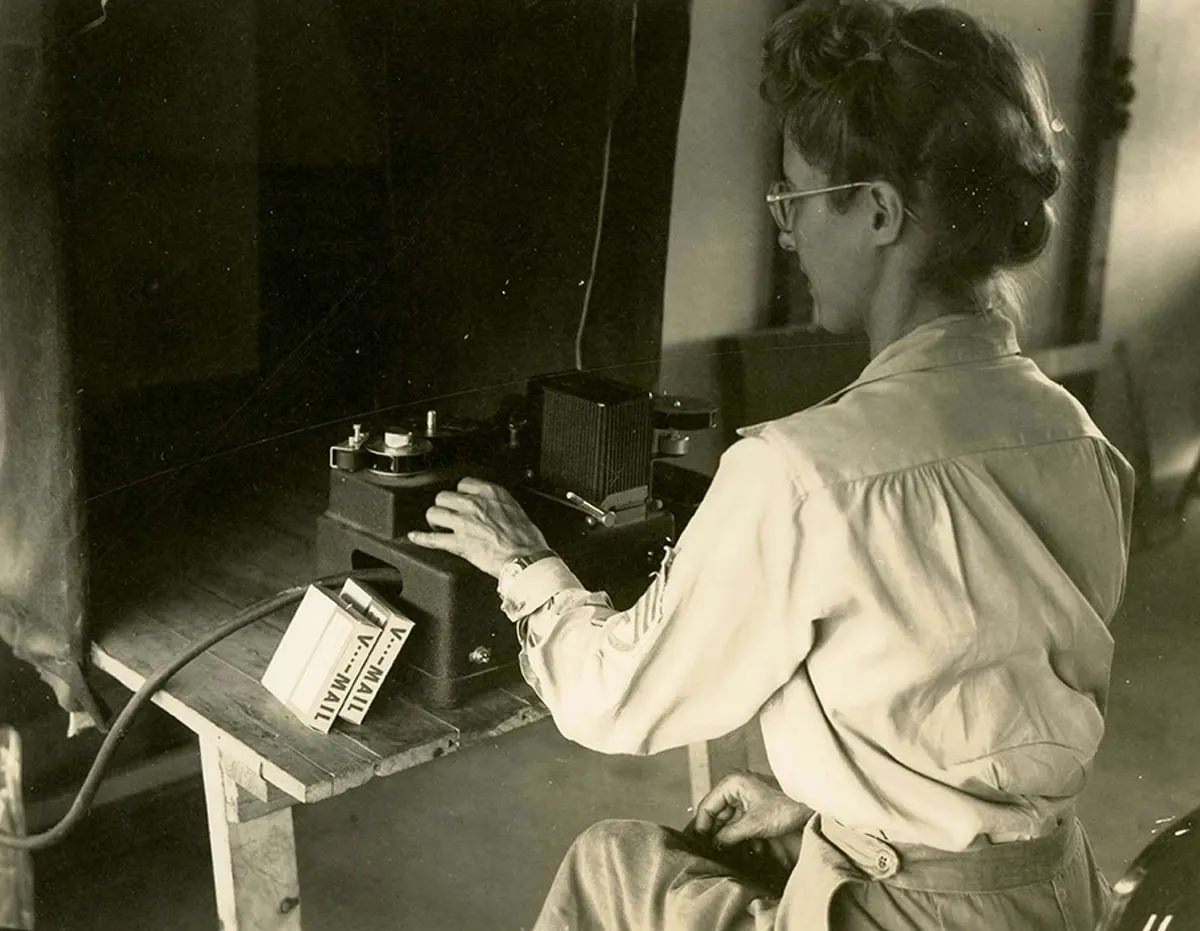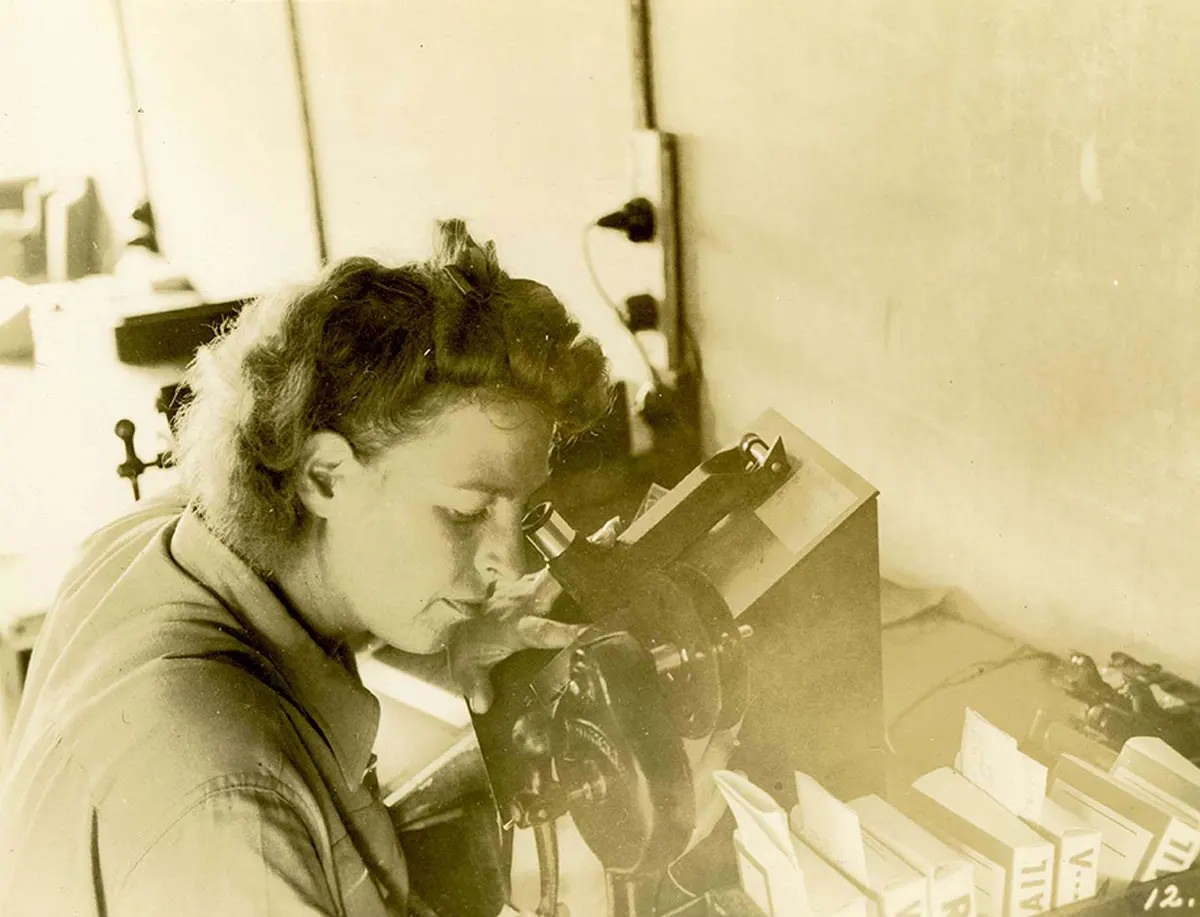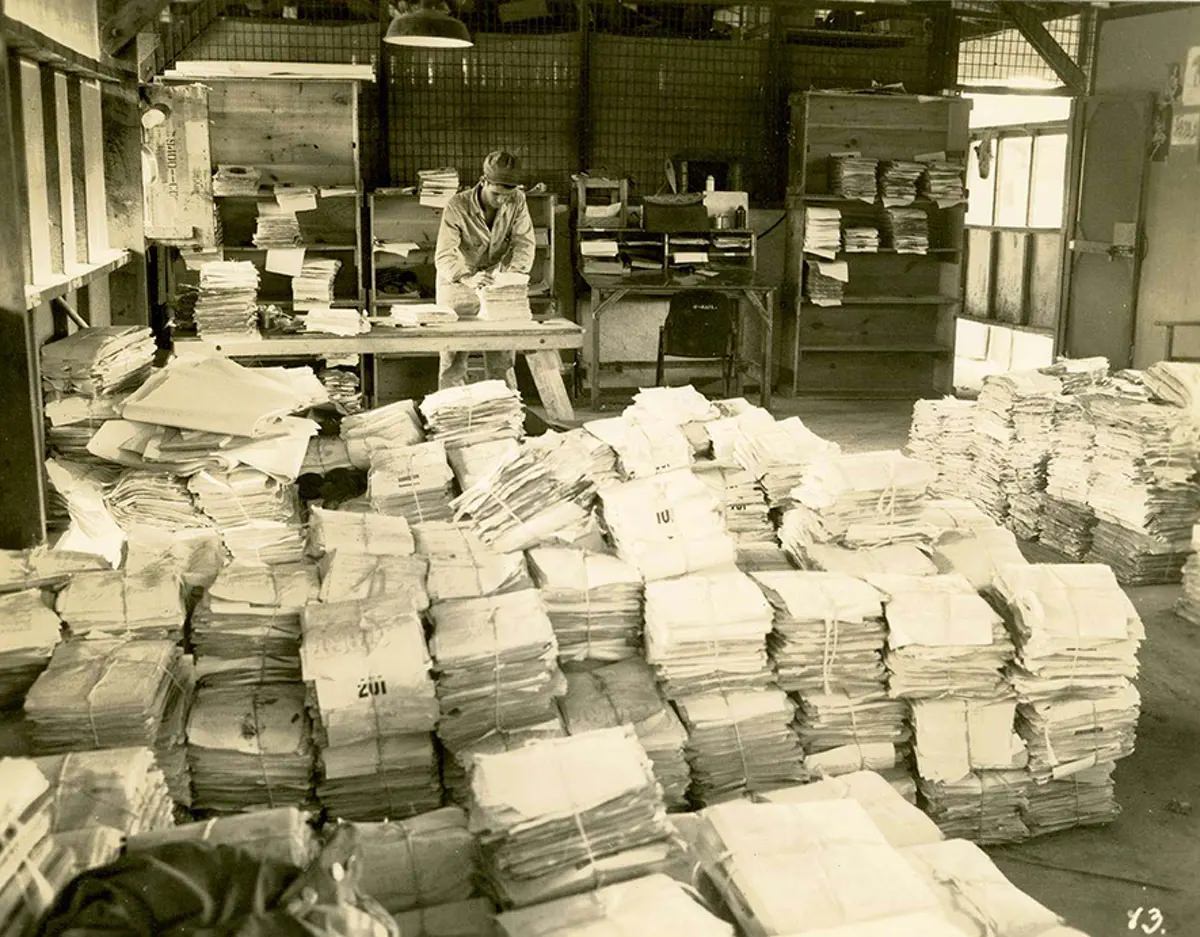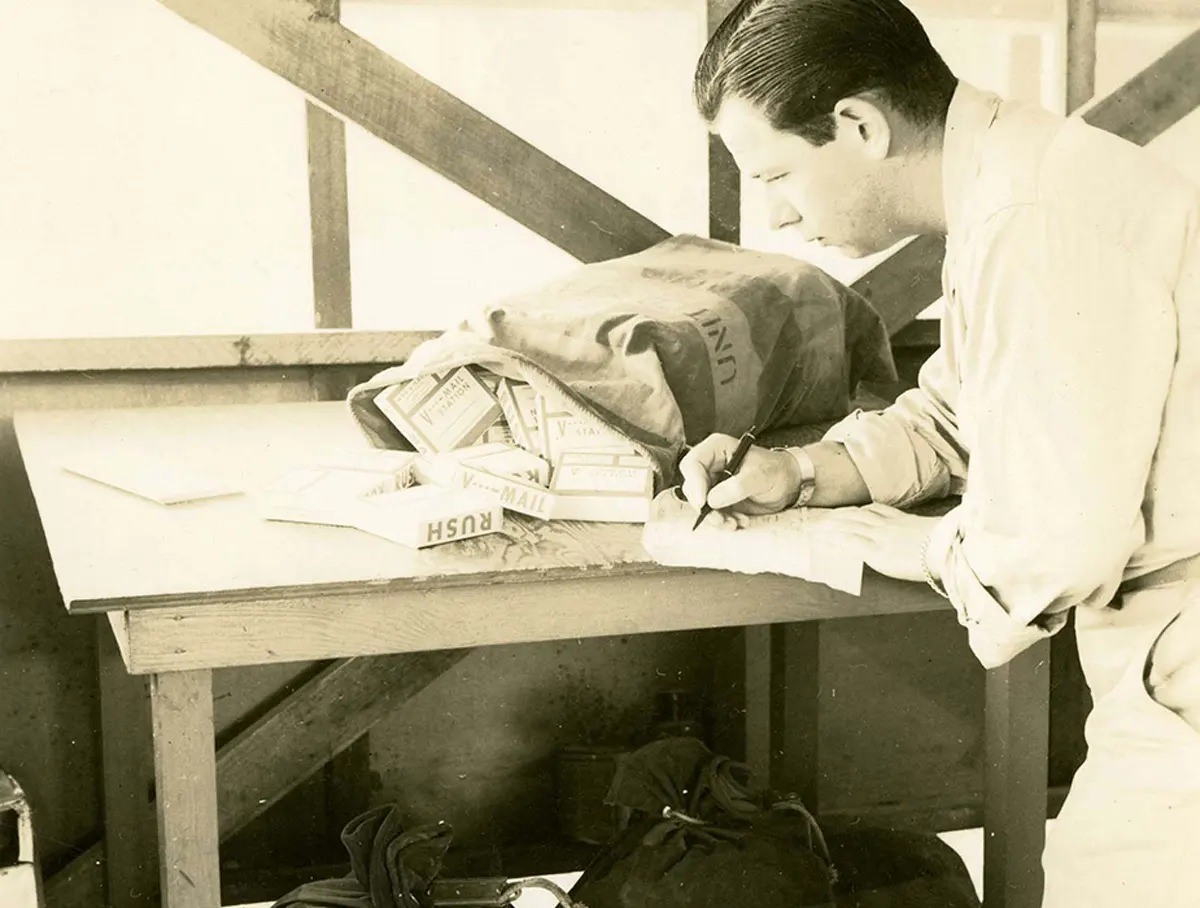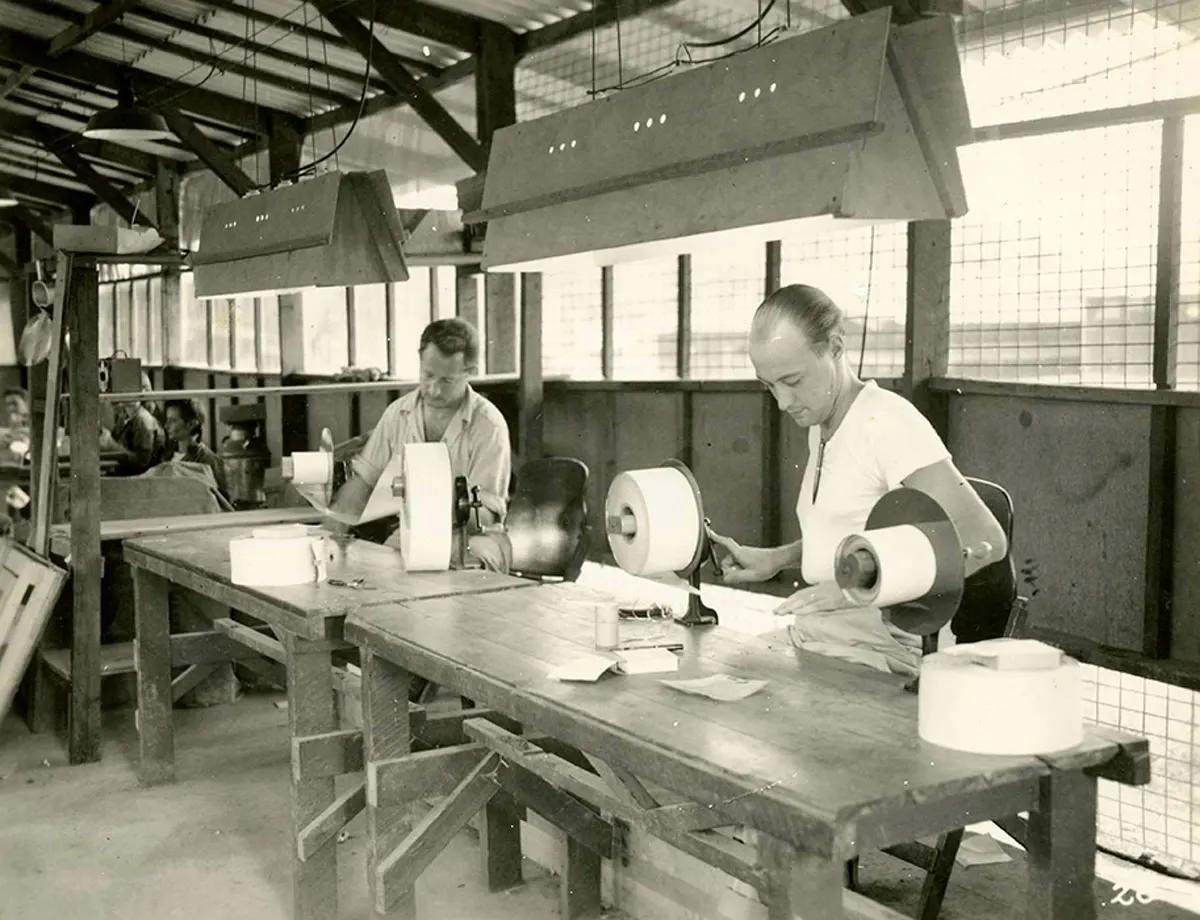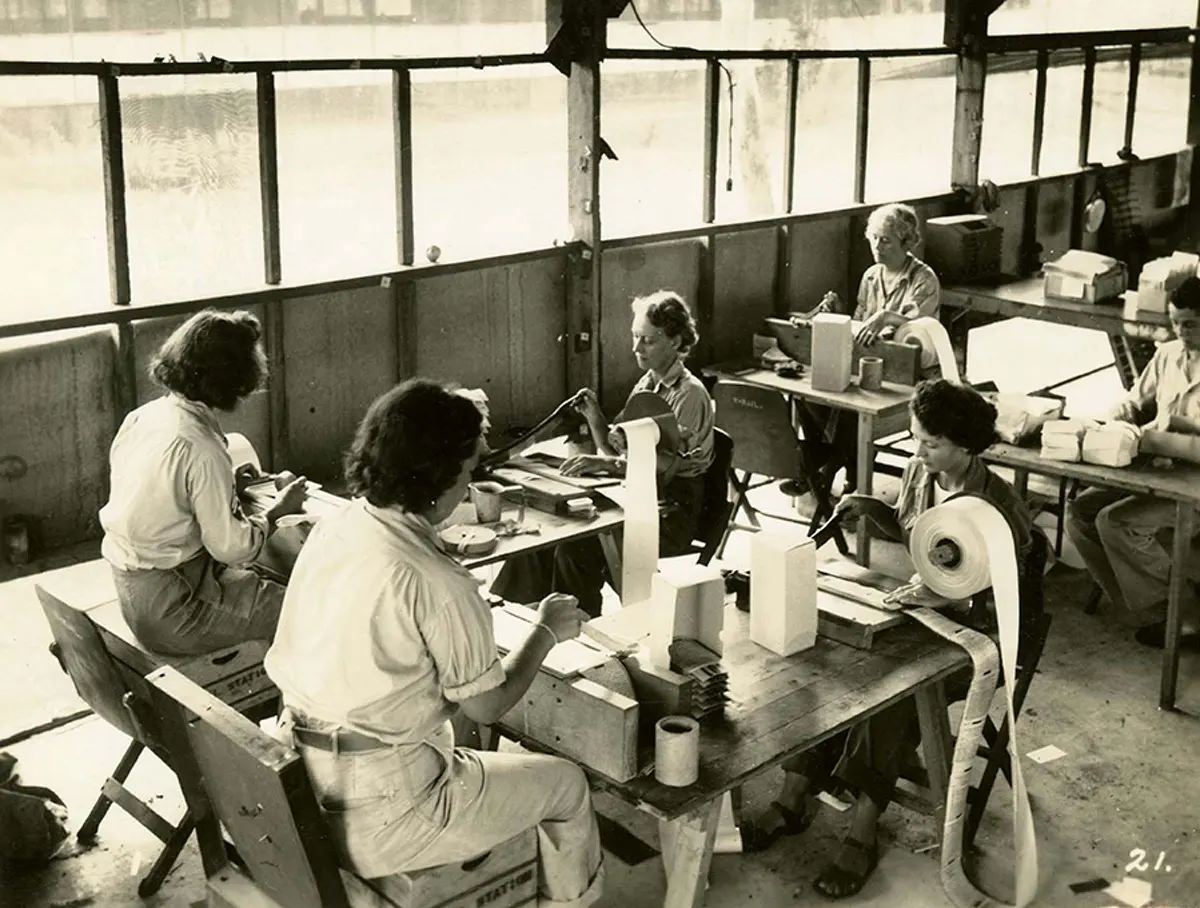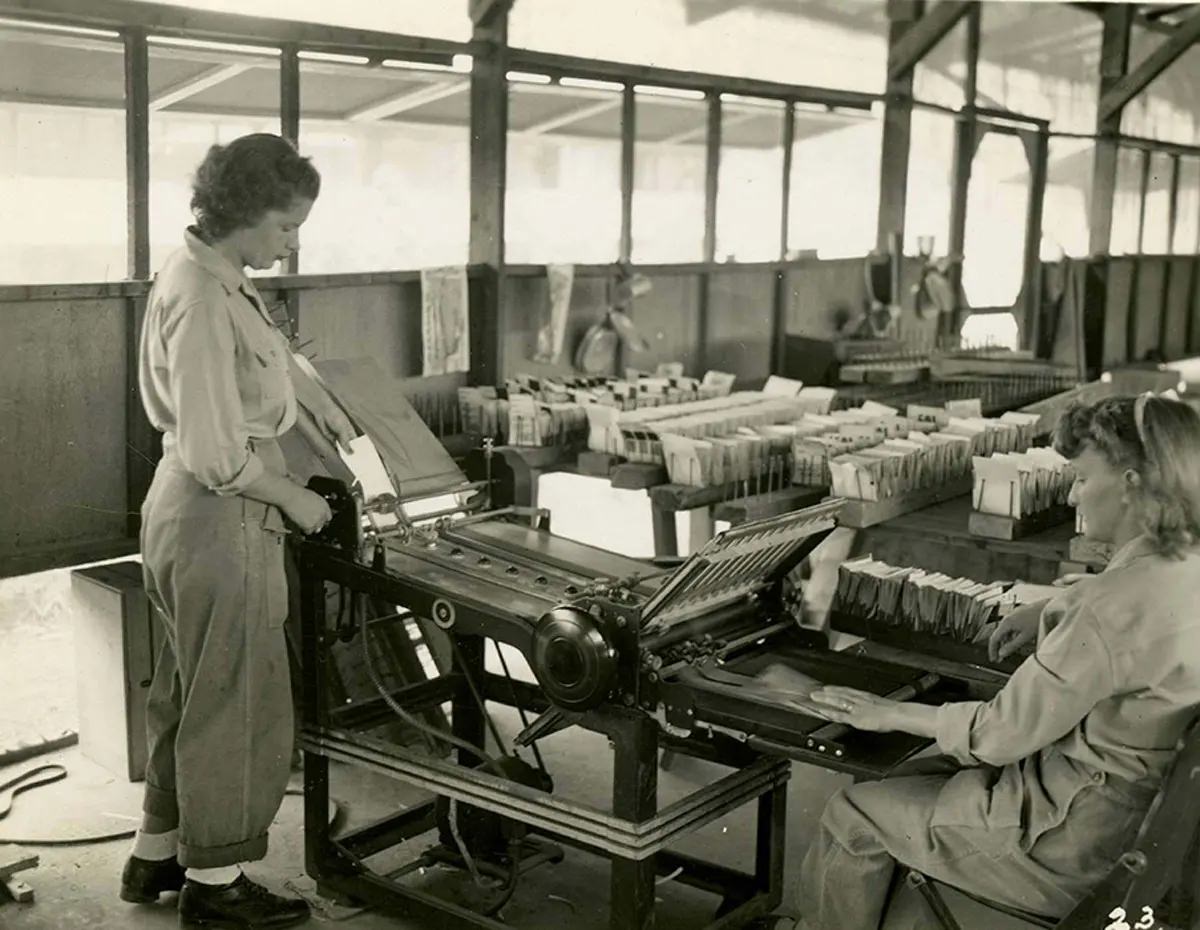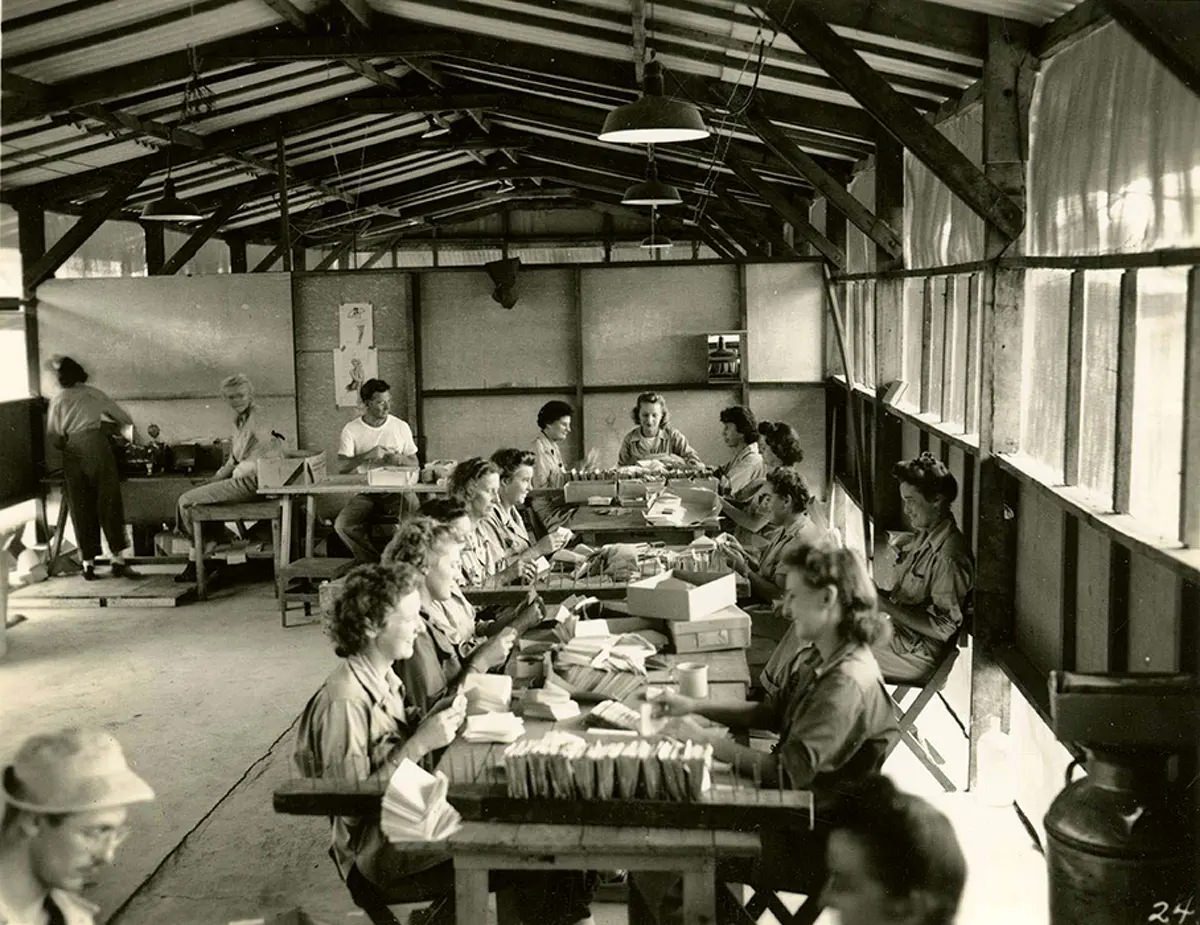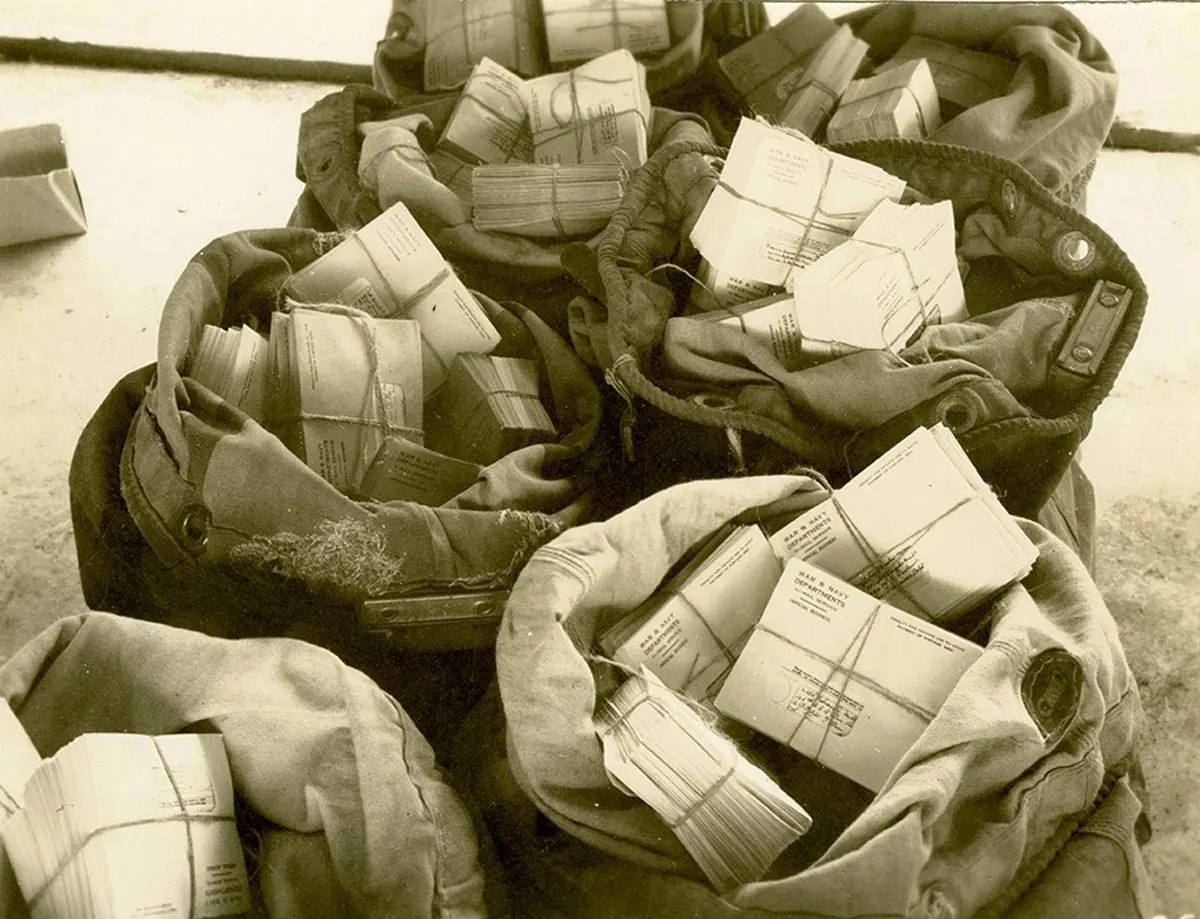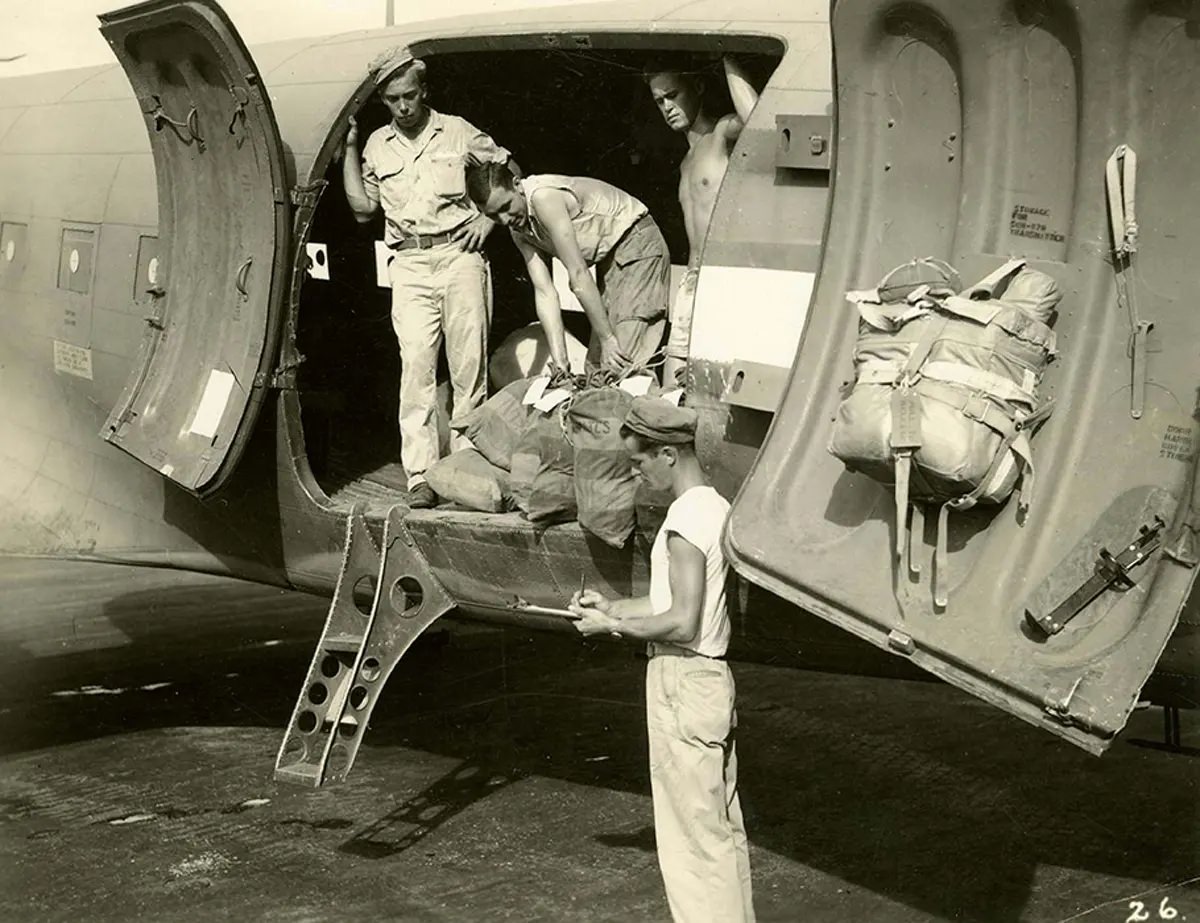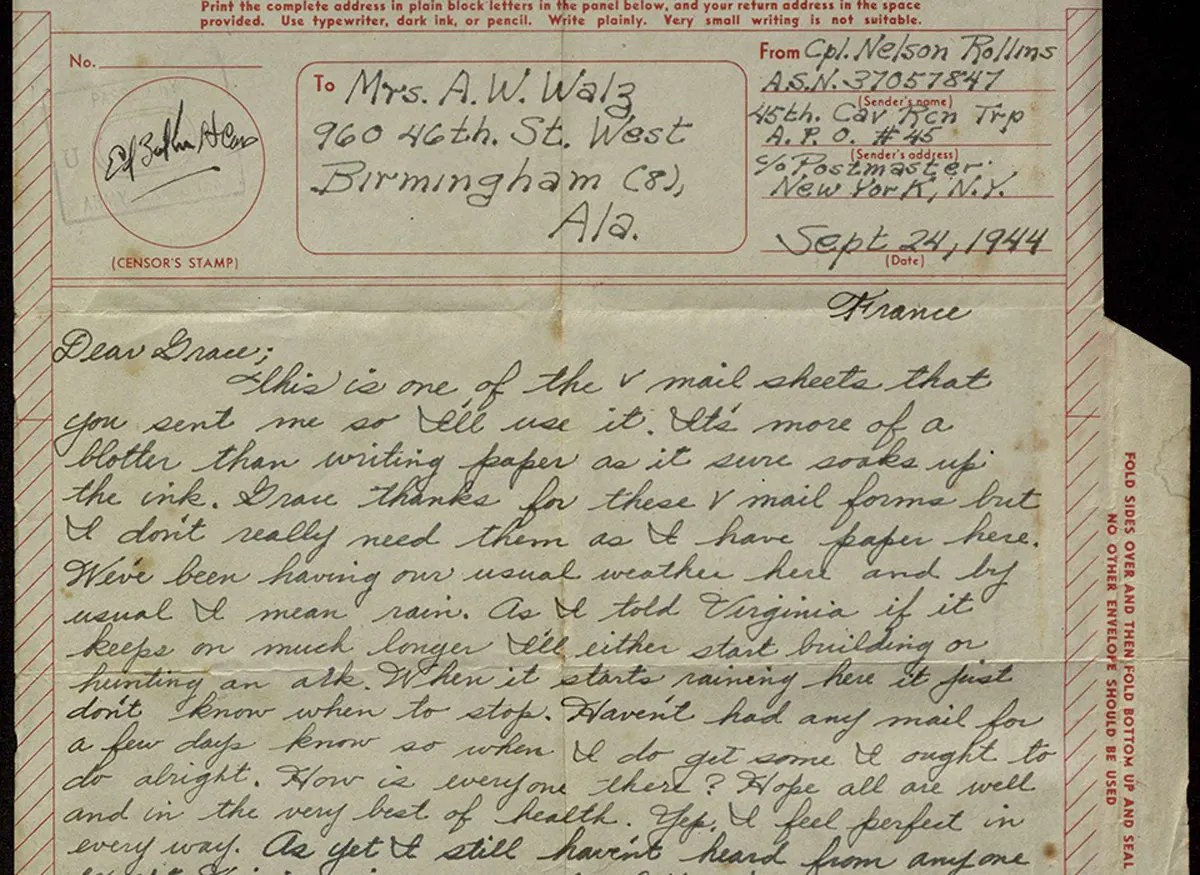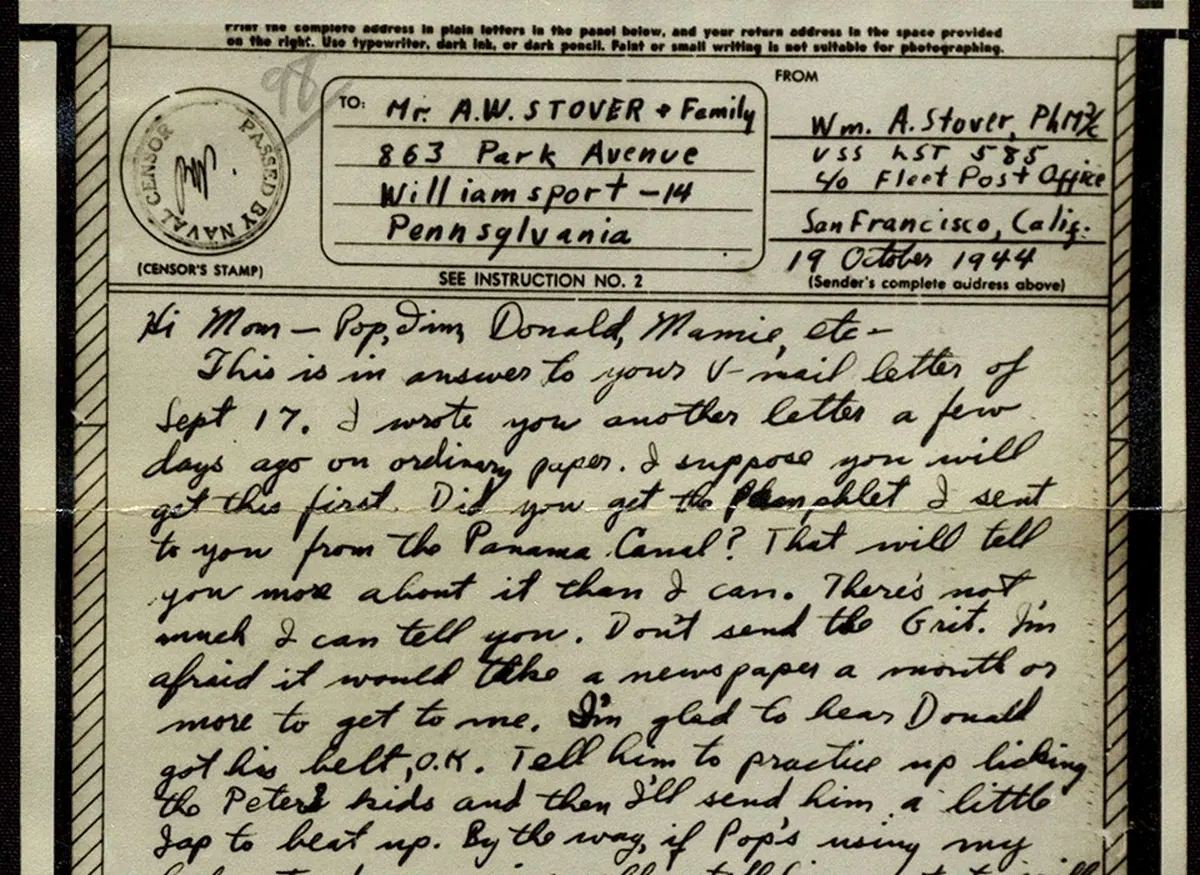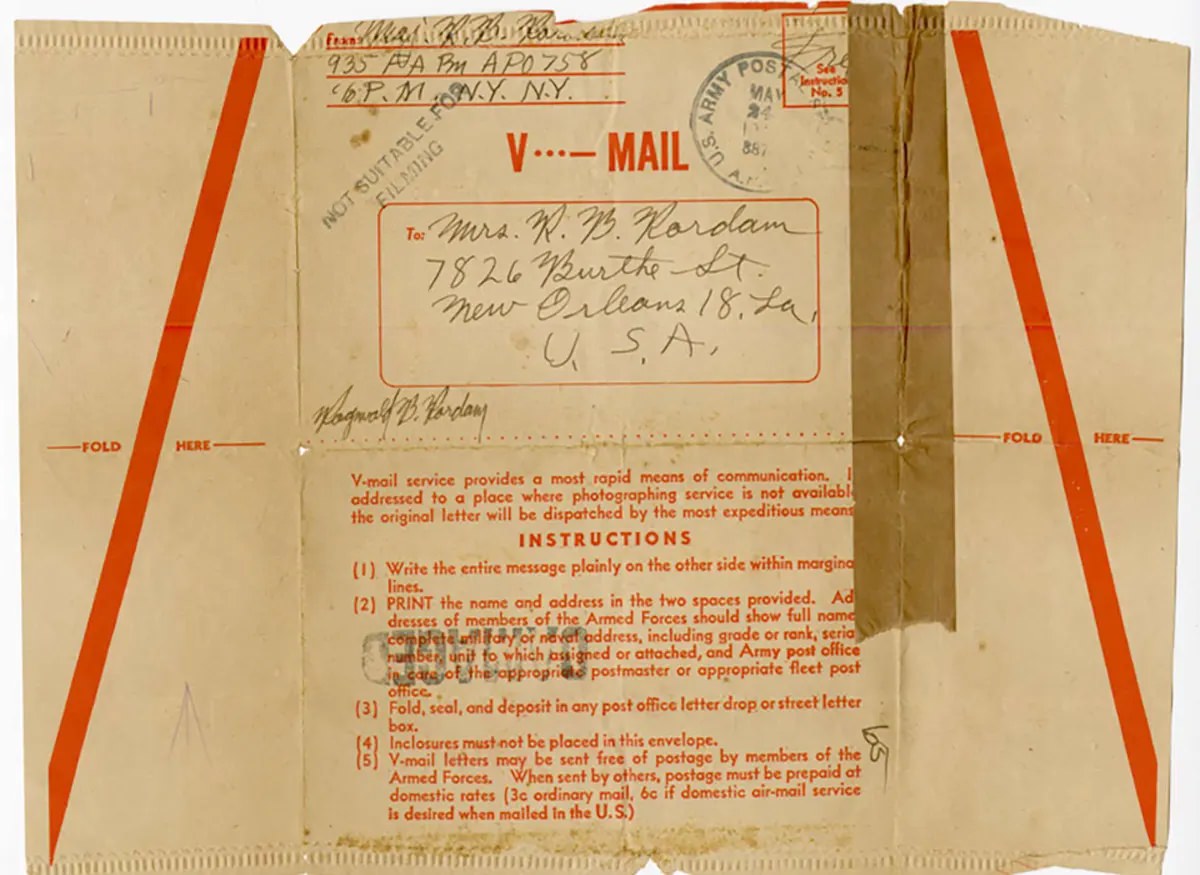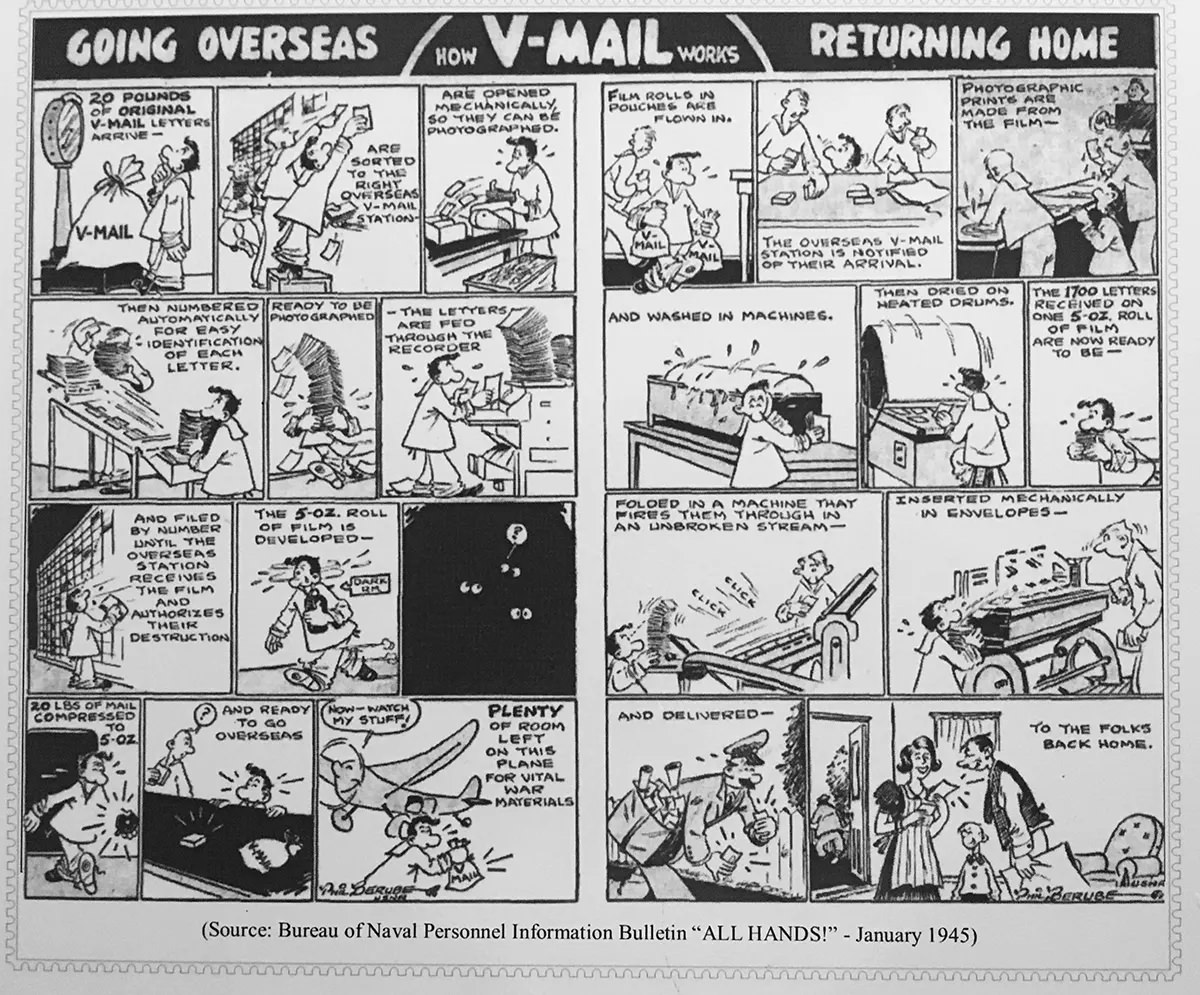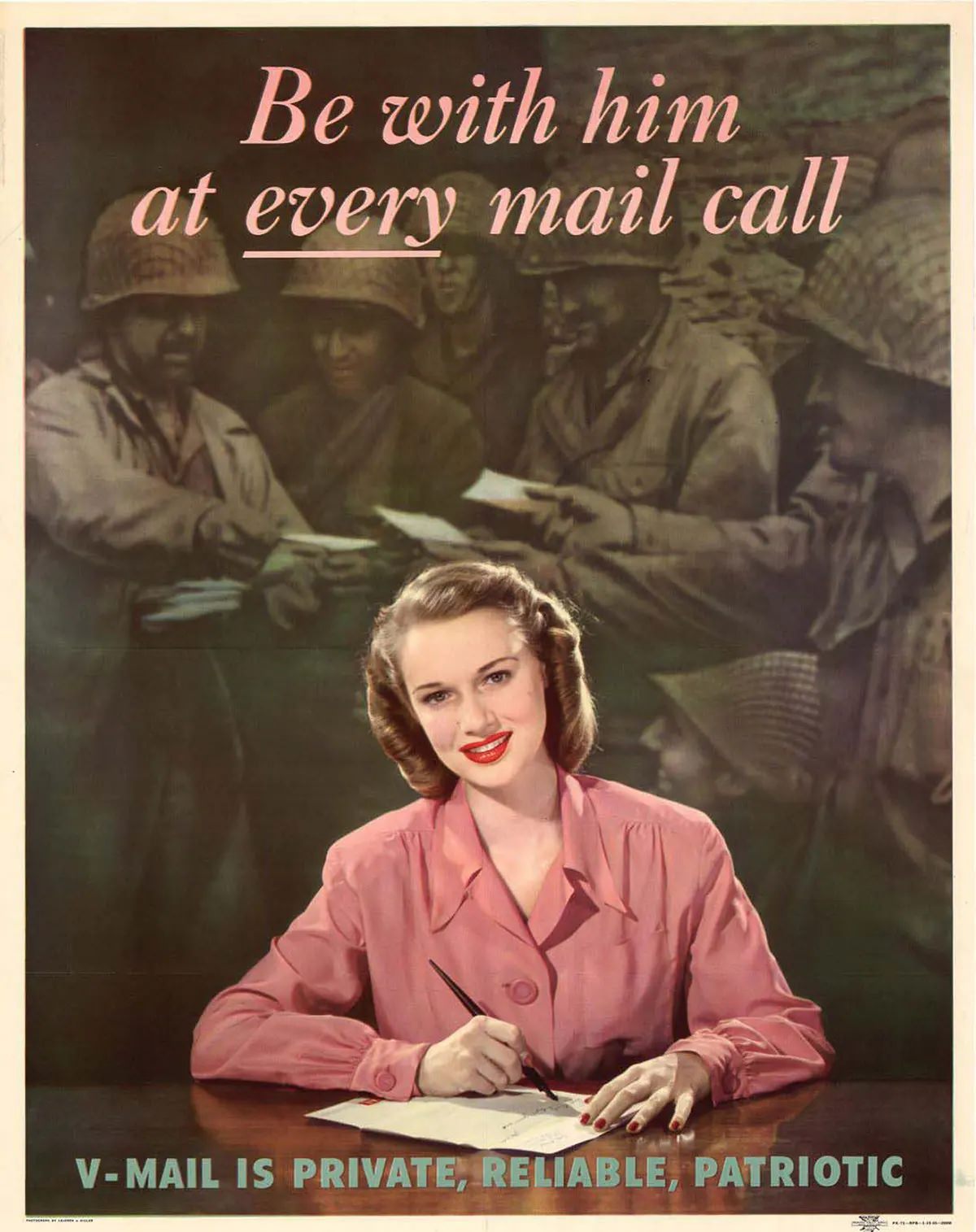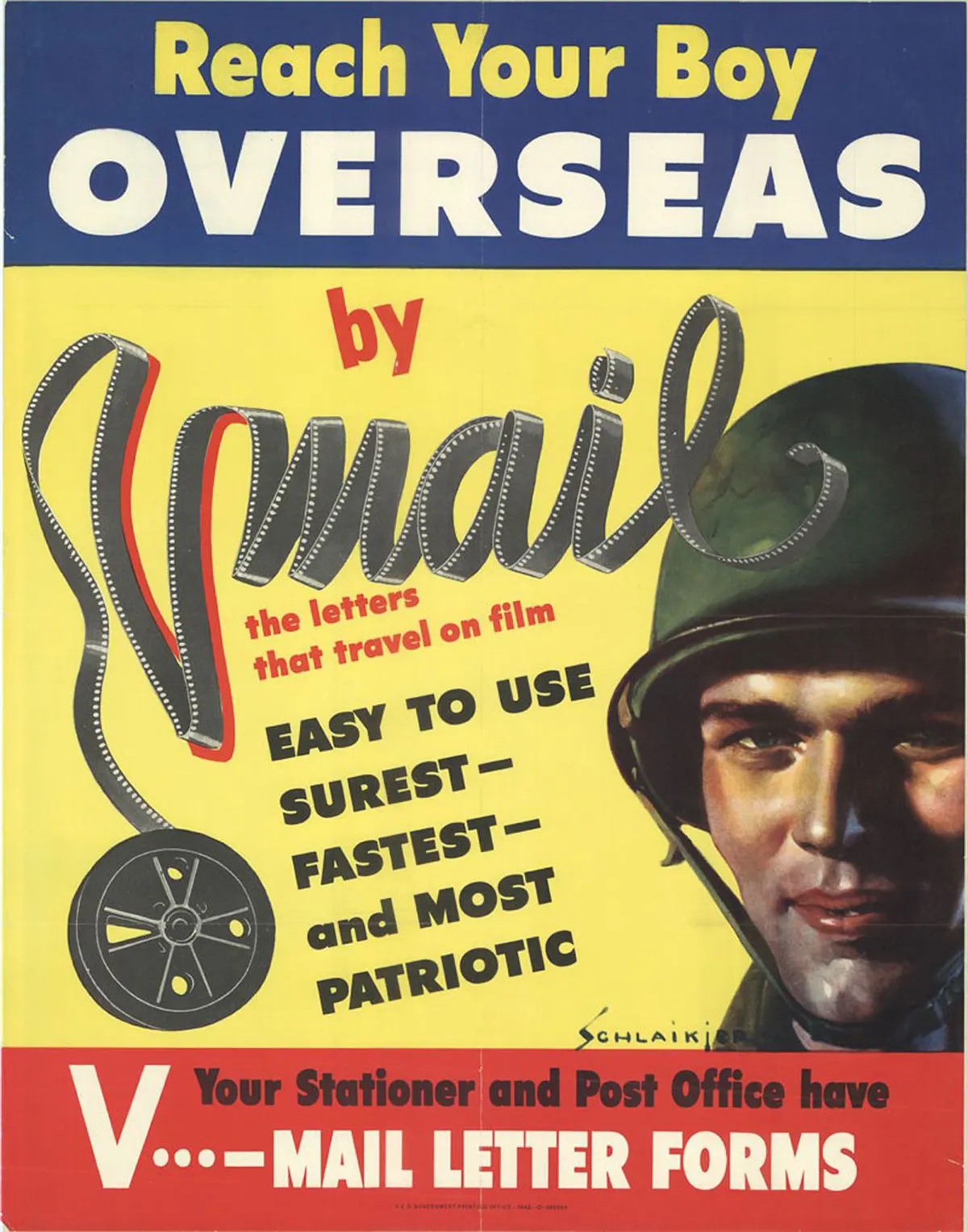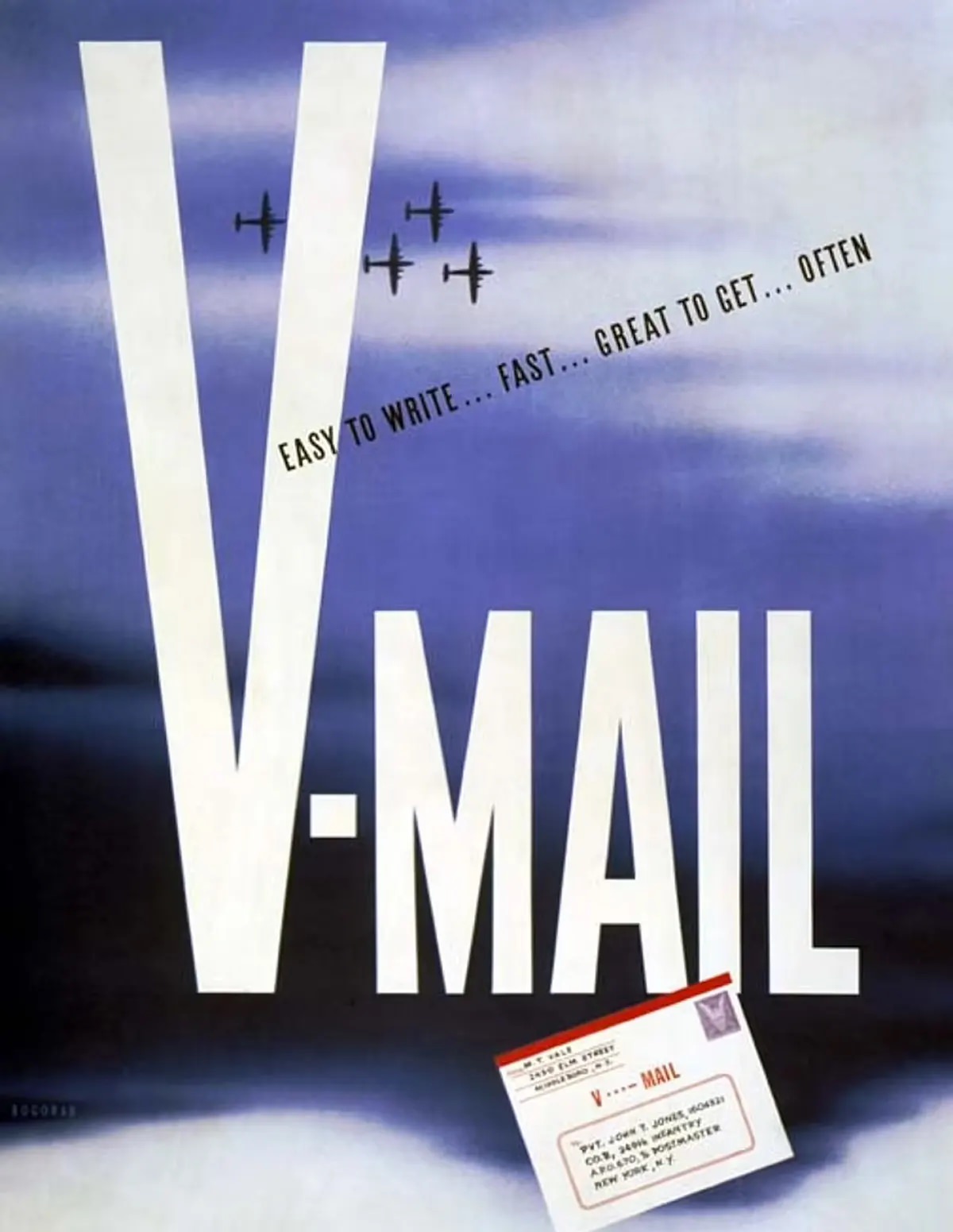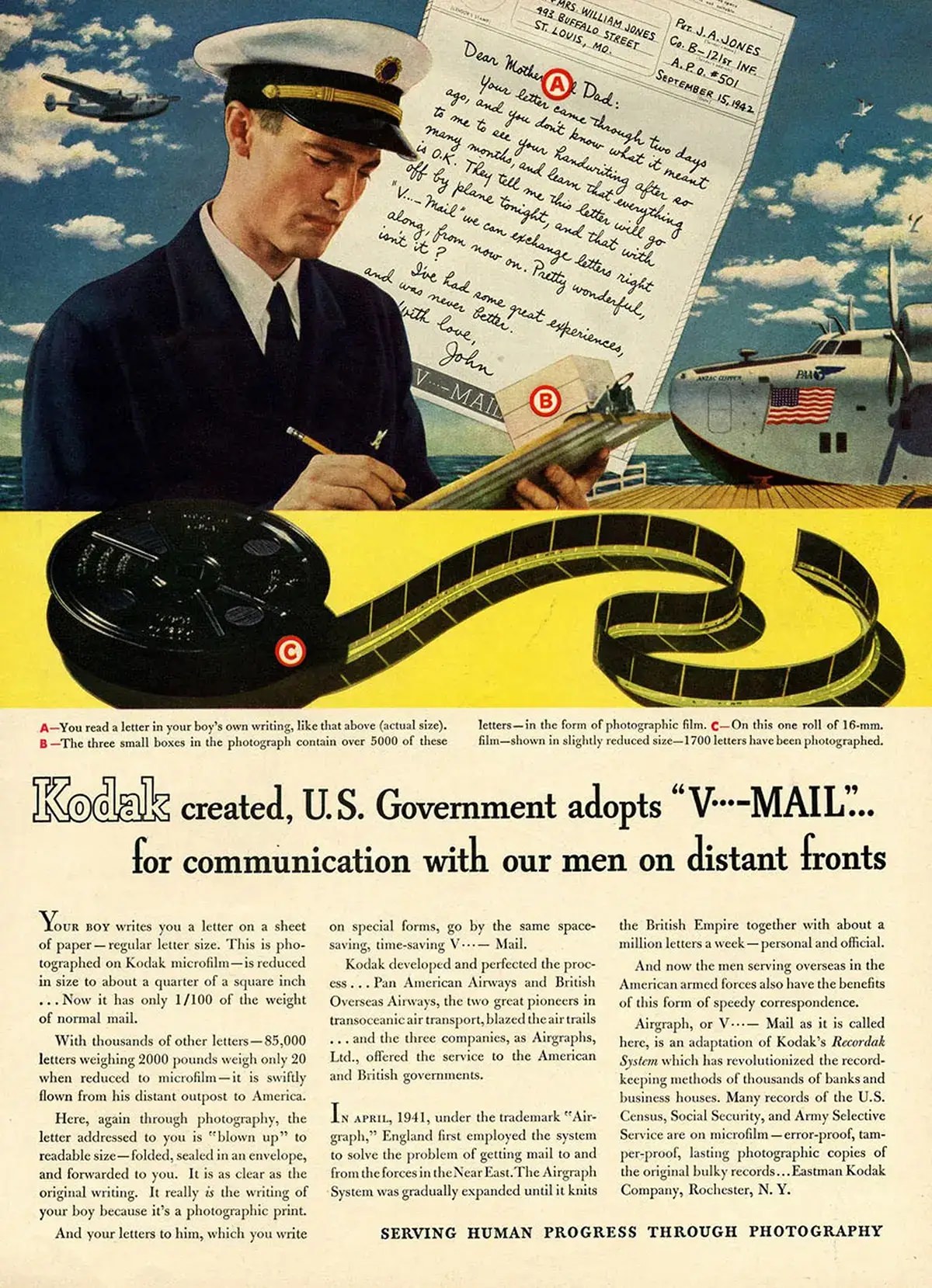Soldiers and sailors stationed overseas relied on letters during World War II. On average, soldiers wrote six letters every week. It took between 1 and 4 weeks for those letters to cross the ocean to the United States. The letters received at home assured loved ones that the serviceman was still alive and well when he wrote them. Letters from home boosted morale for the troops, and a fighting force with high morale fought better.
Sending and delivering these letters proved quite a logistical challenge, especially when the mail had to cross the Atlantic Ocean. Cargo ships took up to a month to deliver mail. In contrast, sending mail via cargo planes, which took less than two weeks, was much more expensive. In addition, cargo space on these planes was limited (for critical weapons and supplies), and letters were heavy and occupied a lot of room. The military postal service turned to the British “Airgraph” in search of a solution.
Eastman Kodak Company developed the airgraph in collaboration with Imperial Airways (now British Airways) and Pan-American Airways in the 1930s to reduce the weight and bulk of mail carried by air. The letters would be written on premade forms, censored, scanned onto microfilm, transported by plane, and then printed onto photo paper and delivered.
The U.S. military postal service adopted this process and renamed it “Victory Mail” or “V-Mail” for short, proving extremely successful. This system saved enormous amounts of money; 2500 pounds of paper letters in 37 mail sacks could be consolidated into only 45 pounds of film in a single mail sack. As a result, more material could be used to supply the war effort. The U.S. reduced waste by only printing the letters at a 60% scale. V-mail prevented espionage inadvertently; as only photocopies of letters were being sent, invisible ink and microdots were rendered useless. Even though the V-mail system was only used between June 1942 and November 1945, over 1 billion items were processed.
The V-mail system used standardized stationery, which combined the letter and envelope into one piece of paper. Even without microfilming, this was an excellent space-saving measure. The Post Office provided two free sheets per person per day and a form specially designed by the Government Printing Office. How one wrote the letter also influenced whether one could read the reduced version. V-mail users were instructed to use a typewriter, ink, or dark pencil. The original forms could accommodate up to 700 typed words. If the writing is faint or small, it cannot be photographed.
There were some drawbacks to V-Mail. There were a limited number of words that could be used. Since the photo prints were printed at 25% of the original letter size, the final product would be unreadable if the print was too small. Some stores sold “V-mail readers,” magnifying glasses so that readers could read the reduced print. The downside of V-mail was that one could not send enclosures (at least initially) or leave a personal imprint on the paper by kissing it. Since lipstick gummed up the machines used to film letters, it was called the “scarlet scourge.” Despite its shortcomings, V-mail benefited from marketing that branded the use of the service as a patriotic duty and grew in popularity over time. V-mail saved crucial shipping space without a doubt.
#1 A courier delivers letters for filming and reproducing at the official photo mail station at the Pentagon.
#2 Letters to members of the armed forces overseas are photographed and transferred to V-mail microfilm.
#3 V-mail is inspected for flaws on an enlarging reader.
#4 V-mail letters are printed onto paper using a continuous enlarger.
#5 Paper reproductions from V-mail microfilm are developed, fixed, washed and dried on a continuous paper processing machine.
#6 View of the continuous enlarger on which the image on the film is enlarged to regular V-Mail size of 4 1/4 x 5 inches.
#7 V-mail envelope with V-mail symbol, March 1943.
#8
#9 Letters to be microfilmed for V-mail are registered, sorted and prepared for photographing.
#10 Paper reproductions of V-mail microfilm are inspected and then cut into individual letters by a “chopper.”
#11 Finished V-mail letters are sorted and prepared for forwarding to recipients.
#12 A V-Mail letter.
#13 Here is a section of the opening and targeting operation.
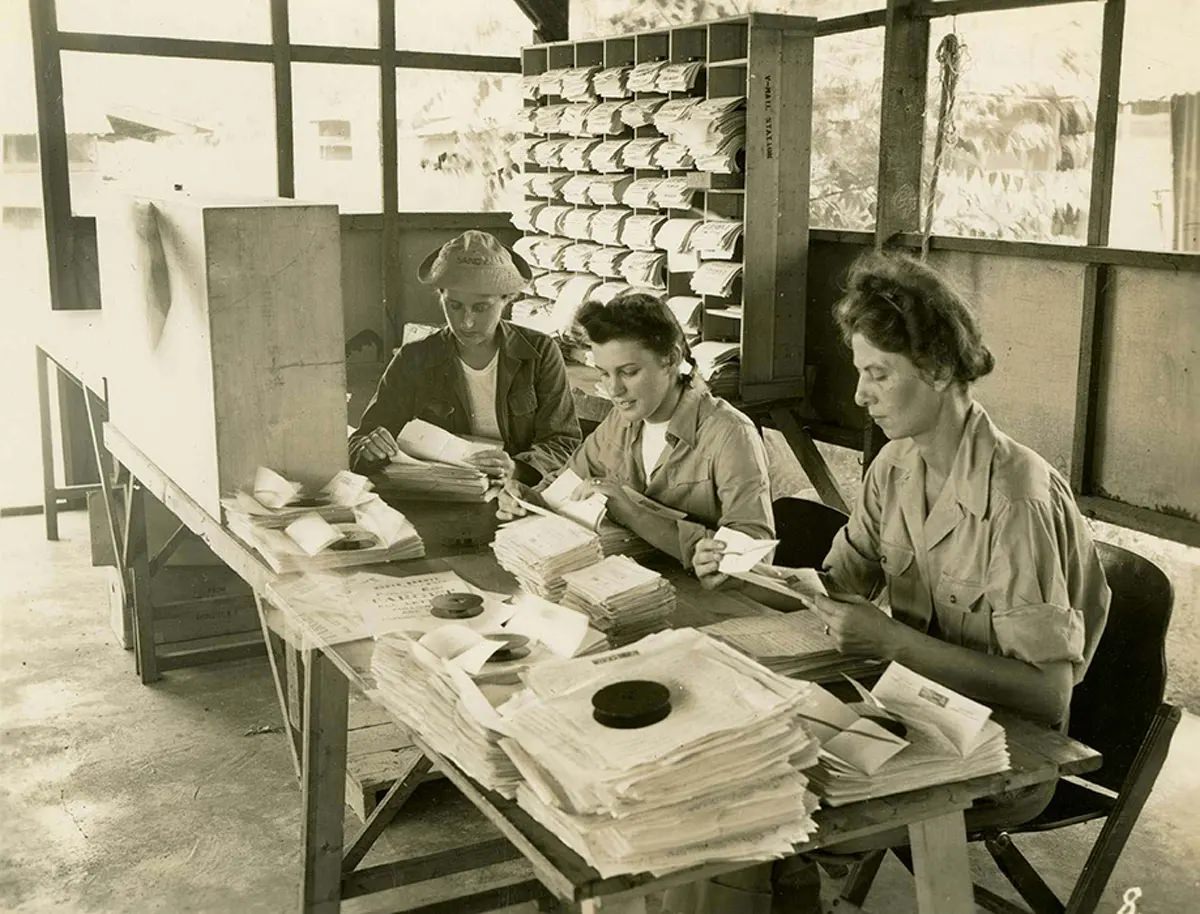
Targeting is simply preparing each group of letters with a State target so mail for each group of States can be sent to its proper finishing station in the States. Here also, are withdrawn all letters which will not photograph well. These, of necessity, must be sent by regular mail, which in this case means by air.” Port Moresby, Papua New Guinea, 1944.


